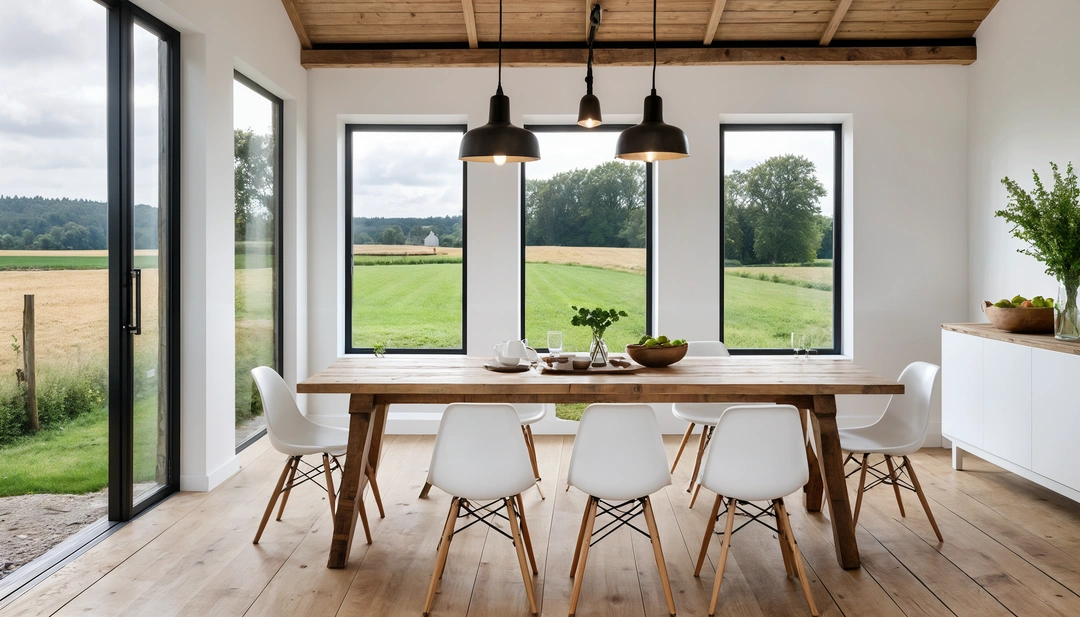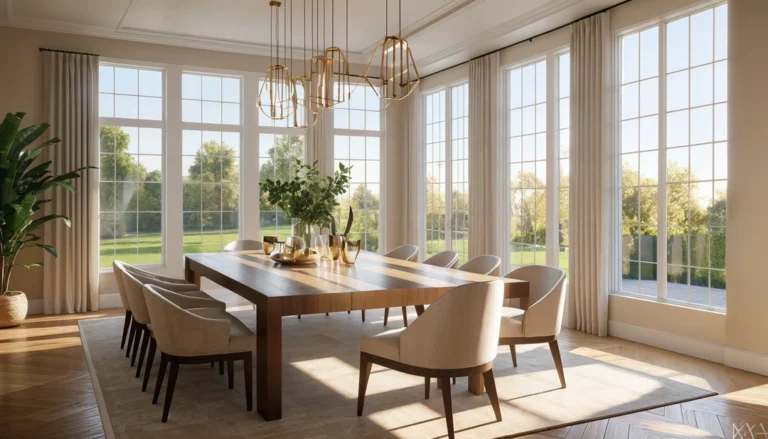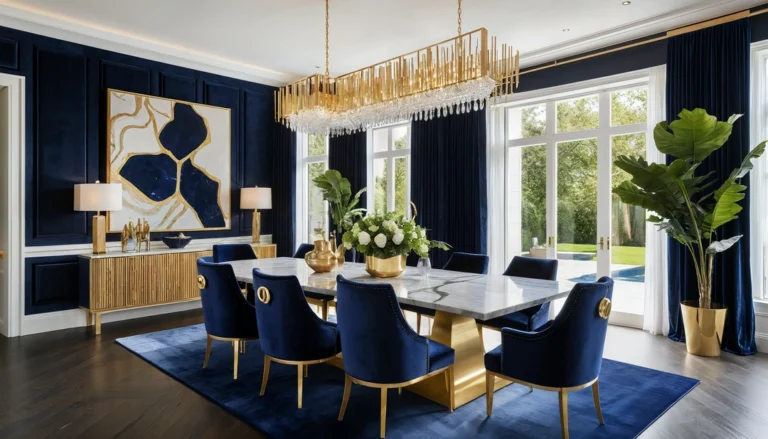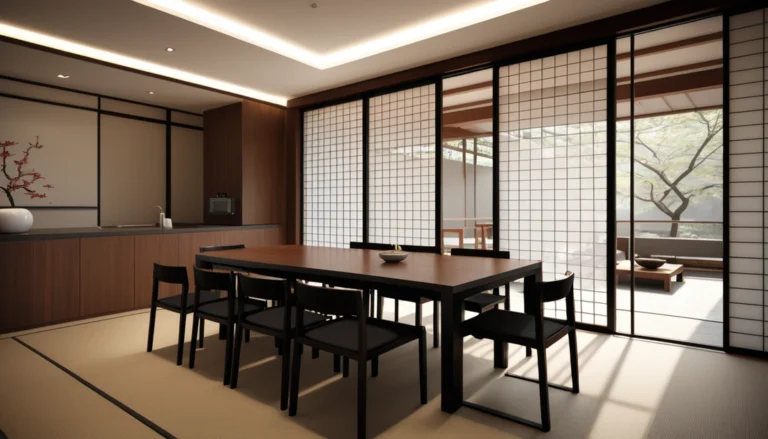In my experience working with homeowners on Scandinavian-inspired interior projects, I’ve observed that this design approach often creates remarkably adaptable and peaceful dining environments. Through various Nordic-style projects, I’ve learned that Scandinavian dining design typically combines functional simplicity with natural material use while maintaining flexibility to respond appropriately to different geographic and climate conditions.
Note: For any structural modifications, electrical work, window installations, or major renovations mentioned in this article, always consult with licensed professionals to ensure safety and code compliance.
What makes Scandinavian dining room design particularly appealing to many homeowners is its emphasis on creating calm, uncluttered spaces that enhance rather than compete with natural surroundings. I’ve found that people often choose this approach because it typically provides timeless aesthetic appeal while offering practical solutions for daily family dining and seasonal entertaining needs.
The key to successful Scandinavian dining design often lies in understanding how to adapt core principles to specific environmental conditions and views. Effective Nordic-inspired spaces typically embrace natural light, quality wood materials, and neutral color palettes while incorporating site-specific elements that honor local landscape and climate characteristics.
Here are 25 approaches for Scandinavian dining rooms adapted to different natural settings, based on observations from various Nordic-inspired design projects in diverse environments.
1. Mountain Environment Adaptation
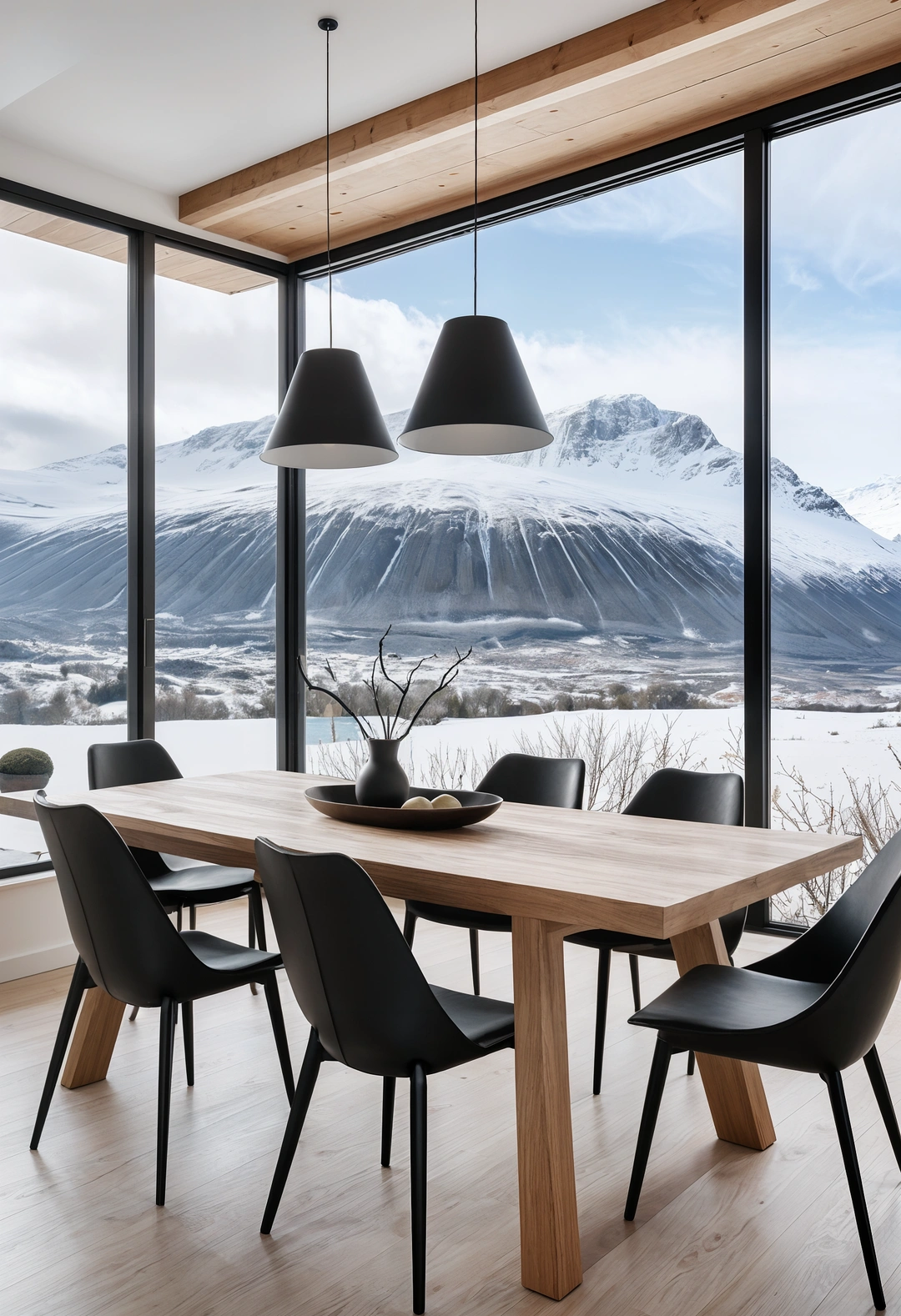
This alpine approach often appeals to properties in mountainous regions wanting connection to dramatic landscapes. Large windows and neutral furnishings typically allow mountain views to dominate while providing necessary warmth for cold climate conditions.
Design consideration: Mountain locations often require specialized window systems while furniture selection should accommodate seasonal temperature variations and potential snow loads.
Practical benefit: Mountain-appropriate design typically provides superior weather resistance while offering the dramatic views that enhance daily dining experiences and property values.
2. Coastal Setting Integration
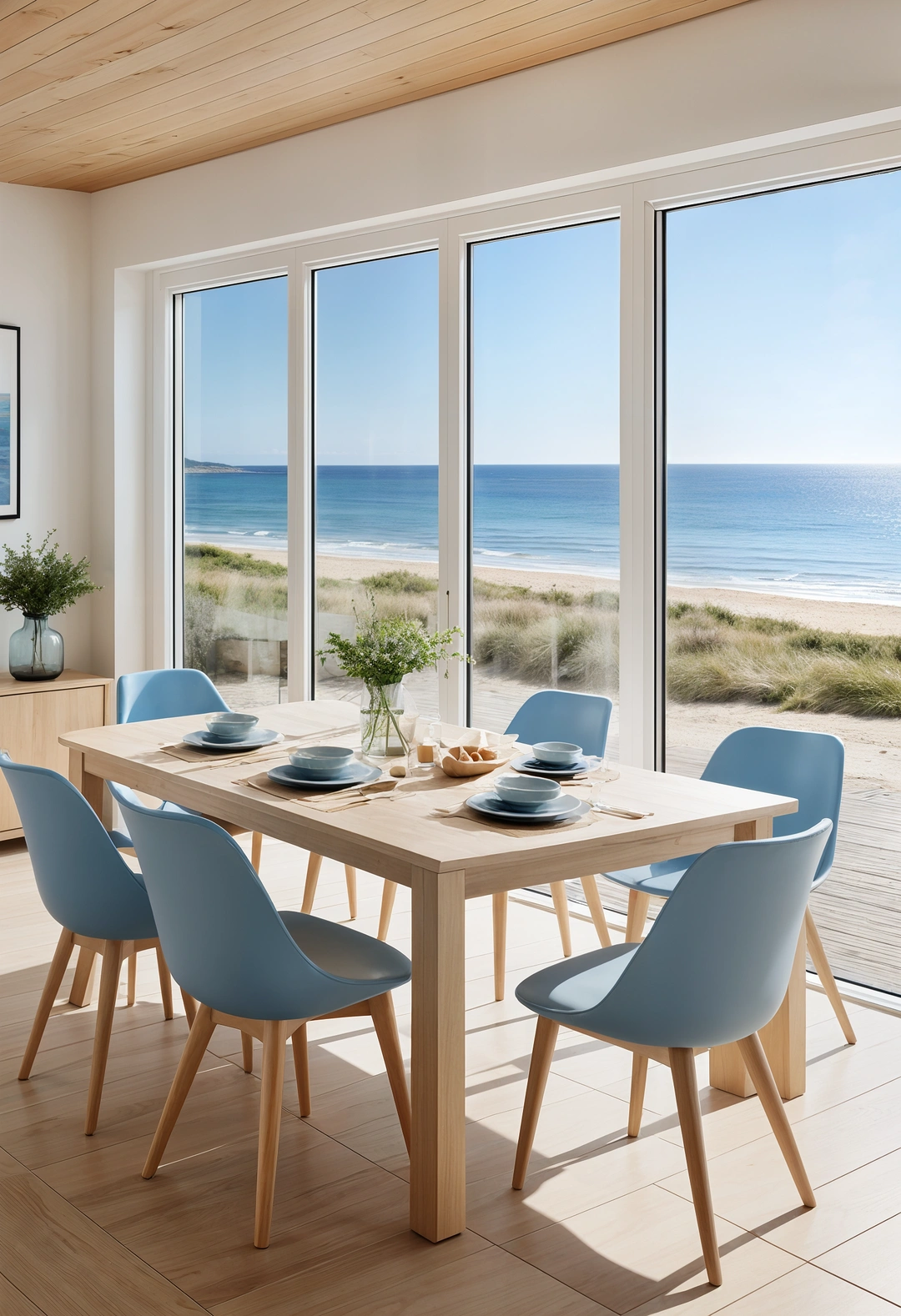
This maritime approach often appeals to beachfront properties wanting relaxed, natural character. Light materials and sea-inspired color accents typically create appropriate coastal atmosphere while maintaining Nordic design principles.
Design consideration: Coastal environments often require salt-resistant materials while design should accommodate sand, moisture, and seasonal tourism impacts on daily living.
Practical benefit: Beach-appropriate materials typically offer superior durability in marine conditions while providing the relaxed atmosphere that enhances coastal family life.
3. Urban Context Solutions
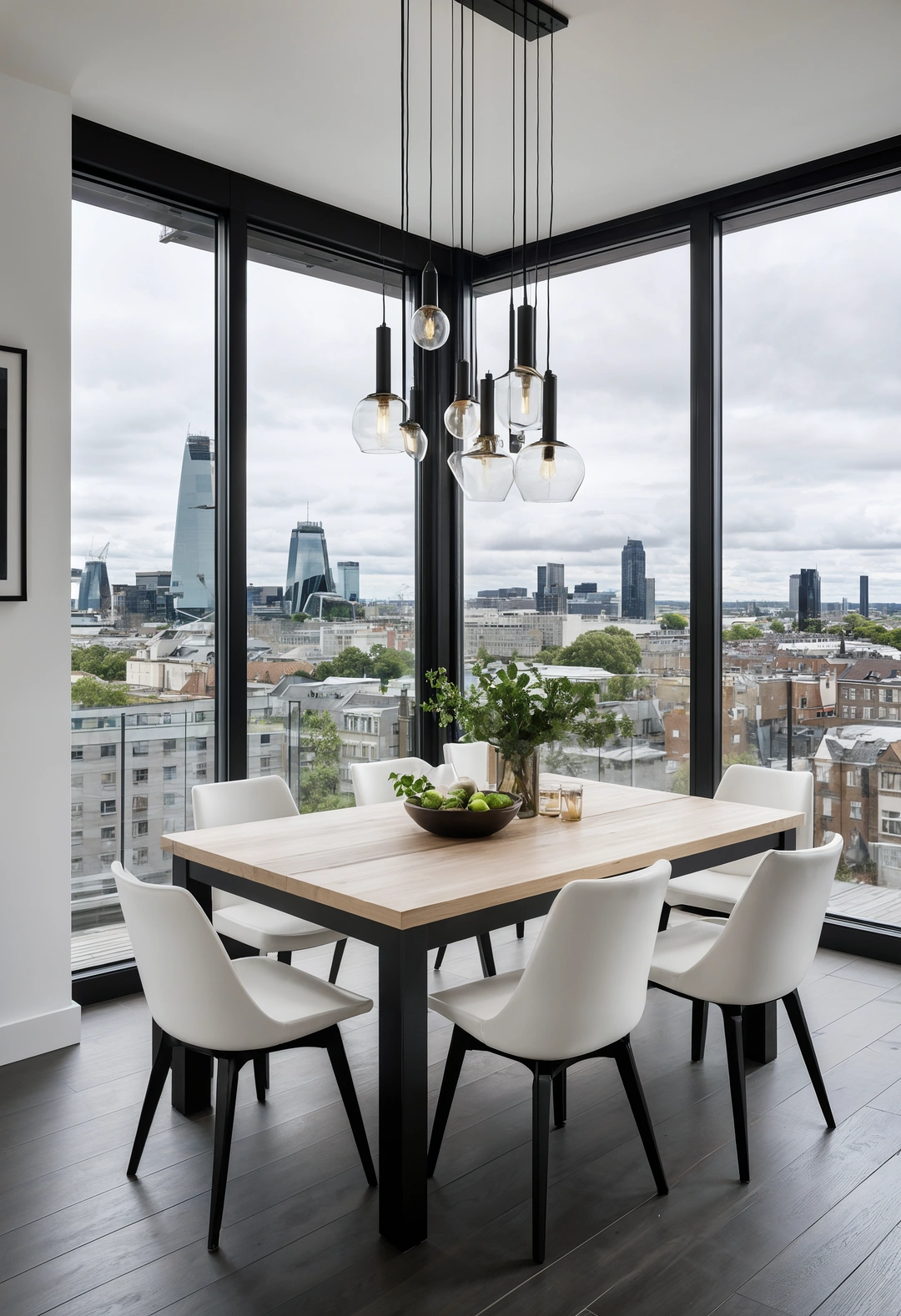
This metropolitan approach often appeals to city dwellers wanting Nordic calm within urban environments. Clean lines and natural materials typically provide peaceful contrast to busy city surroundings while maximizing limited space.
Design consideration: Urban settings often require noise consideration while window treatments should balance natural light with privacy from neighboring properties.
Practical benefit: Urban Nordic design typically provides stress reduction while offering the sophisticated simplicity that works well in contemporary city living.
4. Rural Landscape Harmony
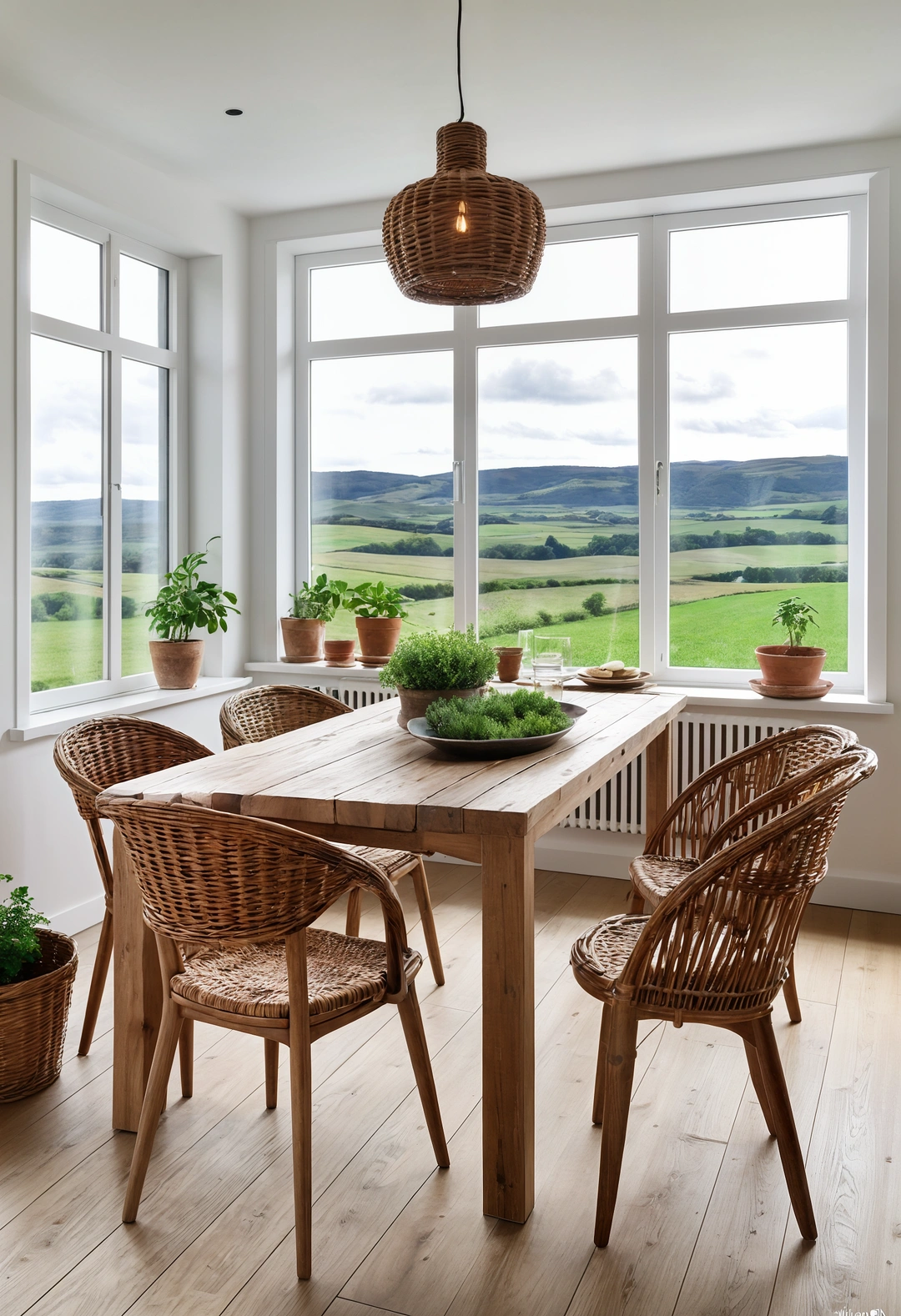
This countryside approach often appeals to properties in agricultural areas wanting connection to pastoral landscapes. Natural wood and earth tones typically complement rural surroundings while providing comfortable family gathering spaces.
Design consideration: Rural settings often allow for larger windows while design should accommodate seasonal agricultural activities and changing landscape views.
Practical benefit: Country-appropriate design typically provides peaceful environments while offering flexibility to accommodate both family meals and seasonal entertaining.
5. Forest Environment Integration
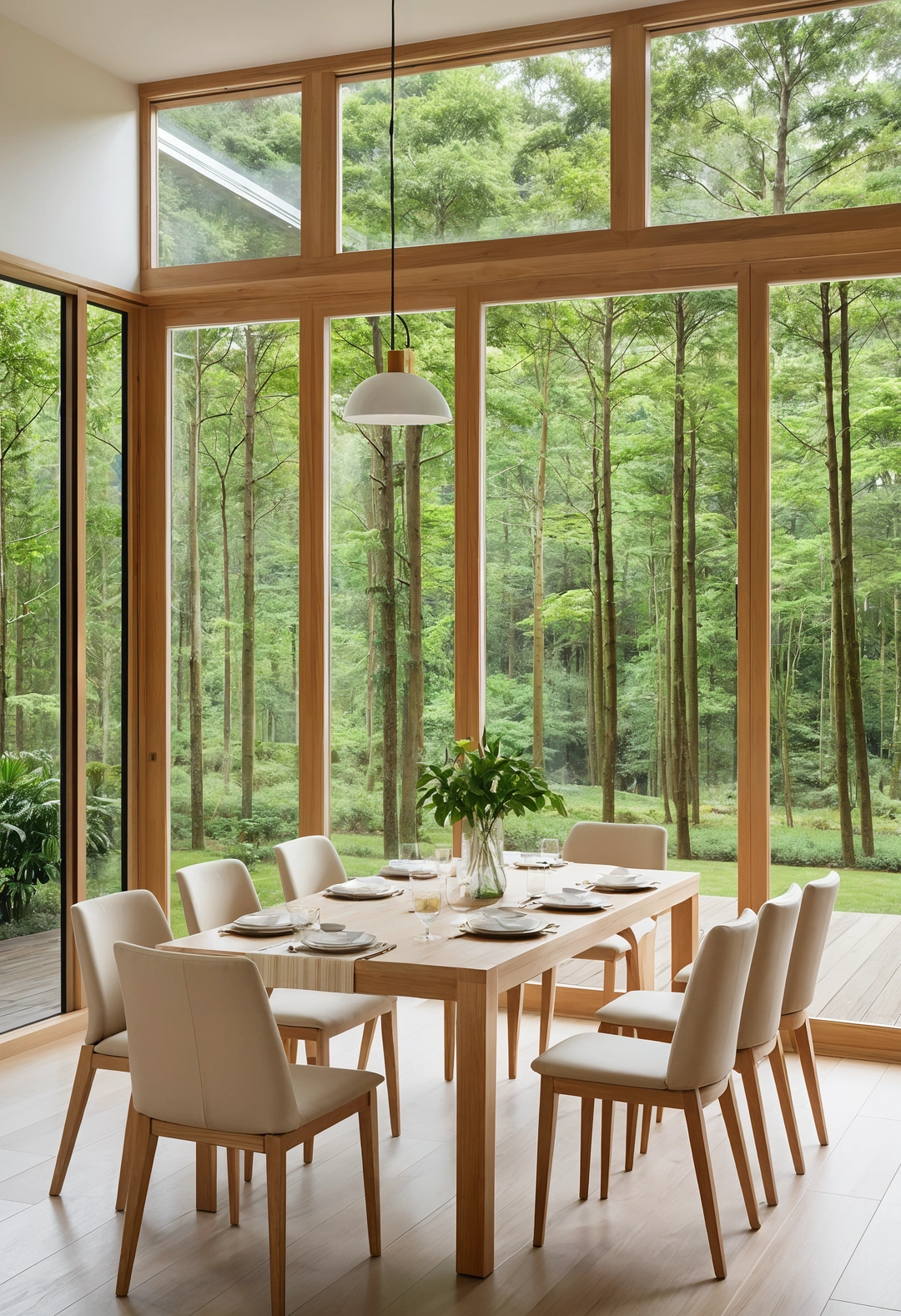
This woodland approach often appeals to properties surrounded by trees wanting intimate connection to natural environments. Natural materials and green accents typically create harmony with forest settings while providing necessary artificial lighting.
Design consideration: Forest locations often require consideration of limited natural light while design should accommodate seasonal changes in tree coverage and views.
Practical benefit: Forest integration typically provides privacy and tranquility while offering the biophilic benefits that enhance family wellness and daily satisfaction.
6. Lakeside Property Adaptation
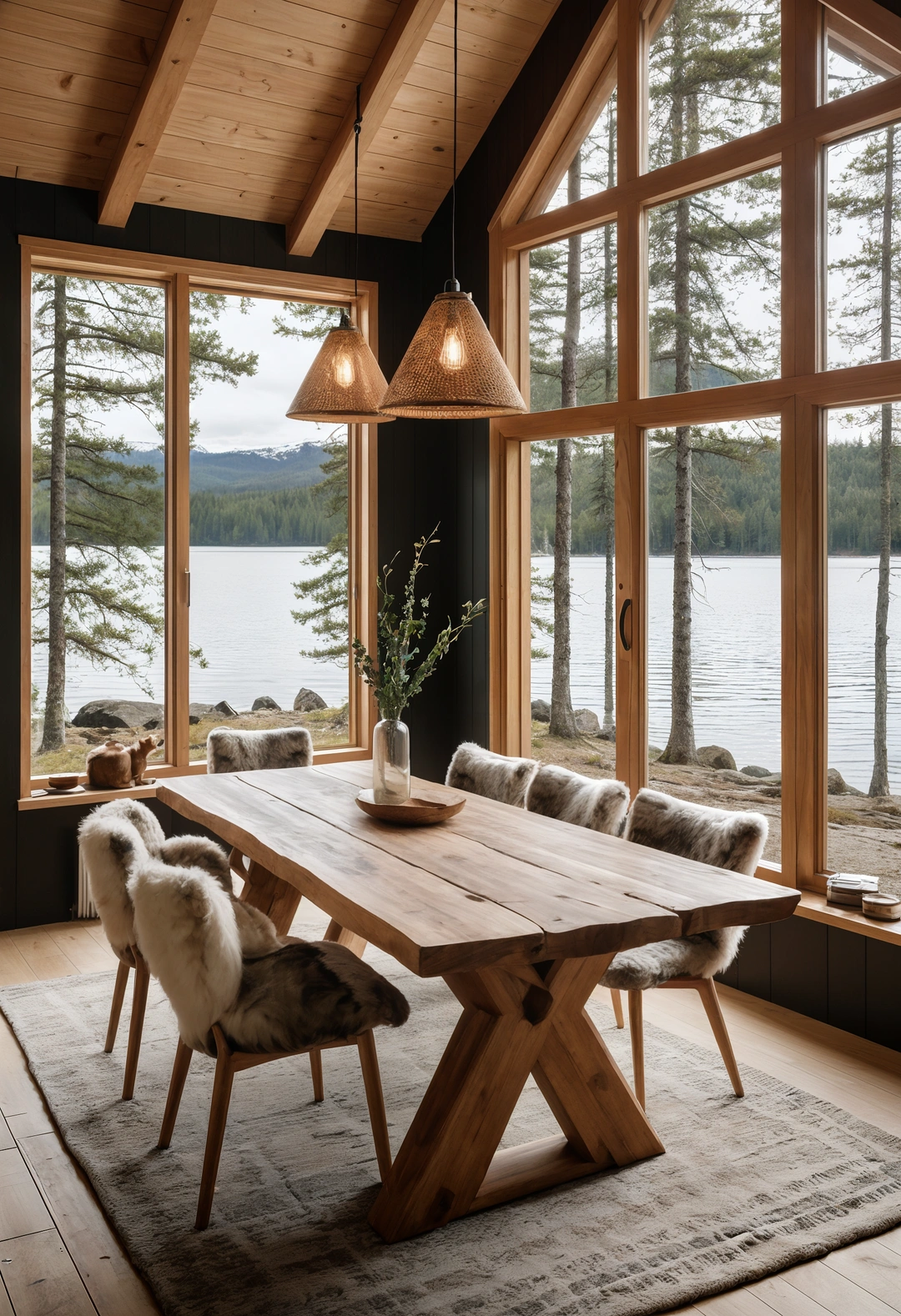
This waterfront approach often appeals to lake properties wanting both sophistication and rustic charm. Natural wood and cozy textiles typically provide appropriate lakeside character while maintaining Nordic design discipline.
Design consideration: Lakeside locations often require humidity consideration while seasonal use patterns may affect furniture and material selections for longevity.
Practical benefit: Lake-appropriate design typically provides year-round beauty while offering the flexibility to accommodate both intimate family meals and larger seasonal gatherings.
7. Arid Climate Modification
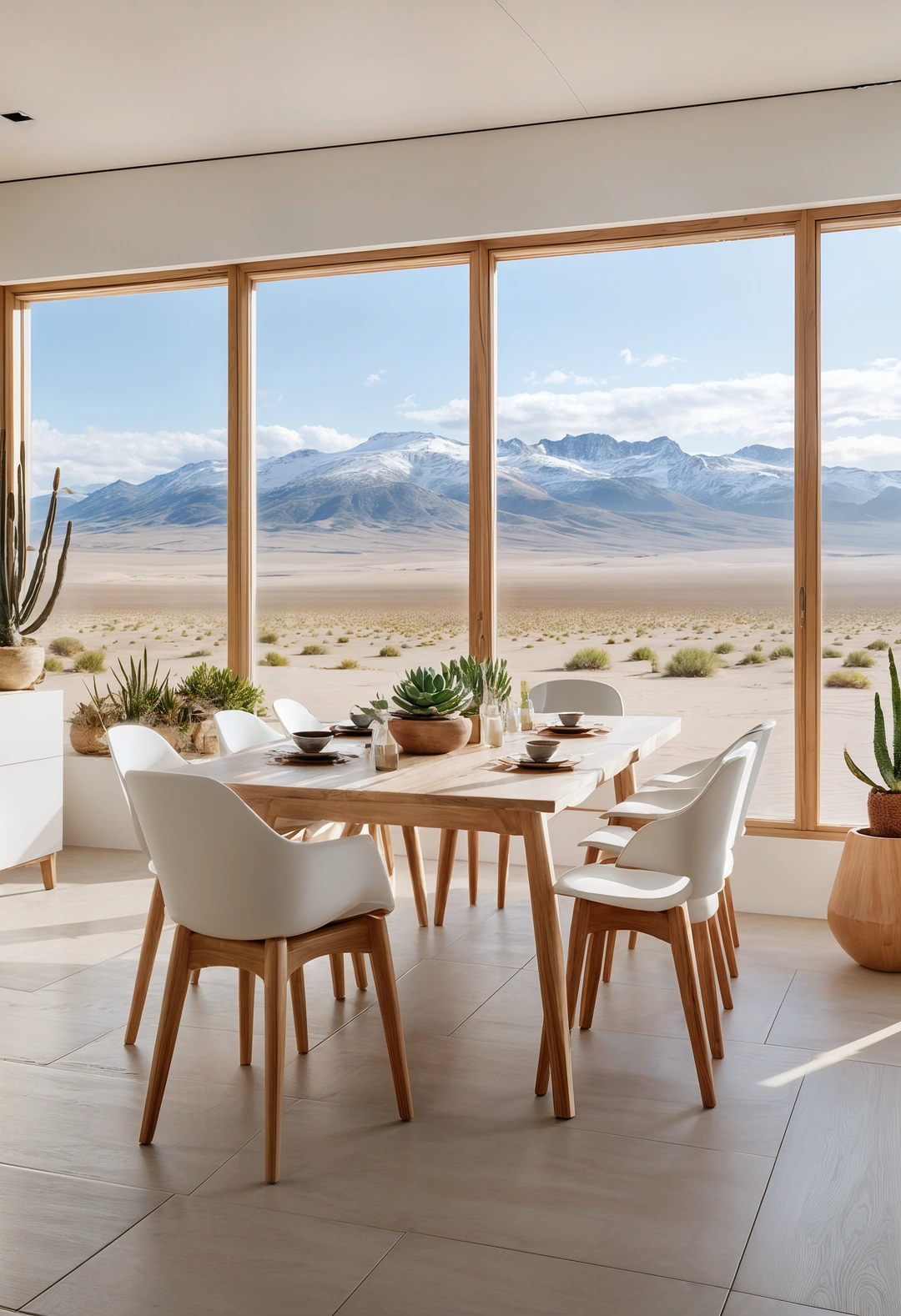
This desert approach often appeals to properties in dry climates wanting Nordic simplicity adapted to challenging environmental conditions. Light colors and minimal elements typically provide cooling visual relief while maintaining Scandinavian aesthetic principles.
Design consideration: Desert environments often require sun protection while material selection should consider extreme temperature variations and low humidity effects.
Practical benefit: Climate-adapted Nordic design typically provides comfortable environments while demonstrating how traditional principles can be successfully applied in non-traditional settings.
8. Winter Climate Optimization
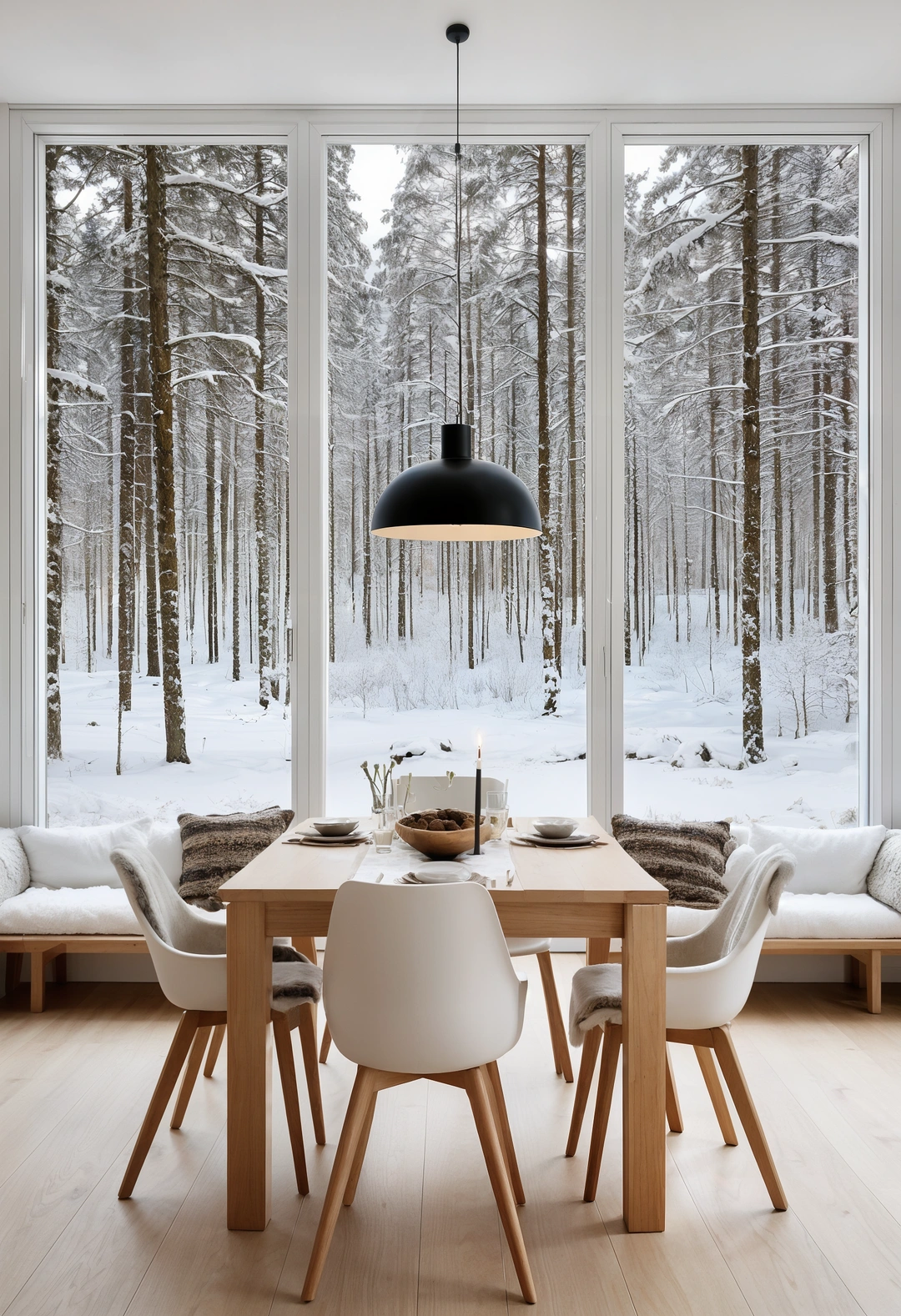
This seasonal approach often appeals to cold climate properties wanting cozy warmth during extended winter periods. Warm lighting and comfortable textiles typically provide necessary psychological warmth while maintaining Nordic design clarity.
Design consideration: Winter-focused design often requires additional lighting while color selection should enhance rather than emphasize the limitations of reduced daylight hours.
Practical benefit: Season-appropriate design typically improves winter comfort while providing the uplifting environment that supports family morale during challenging weather periods.
9. Open Ocean Exposure
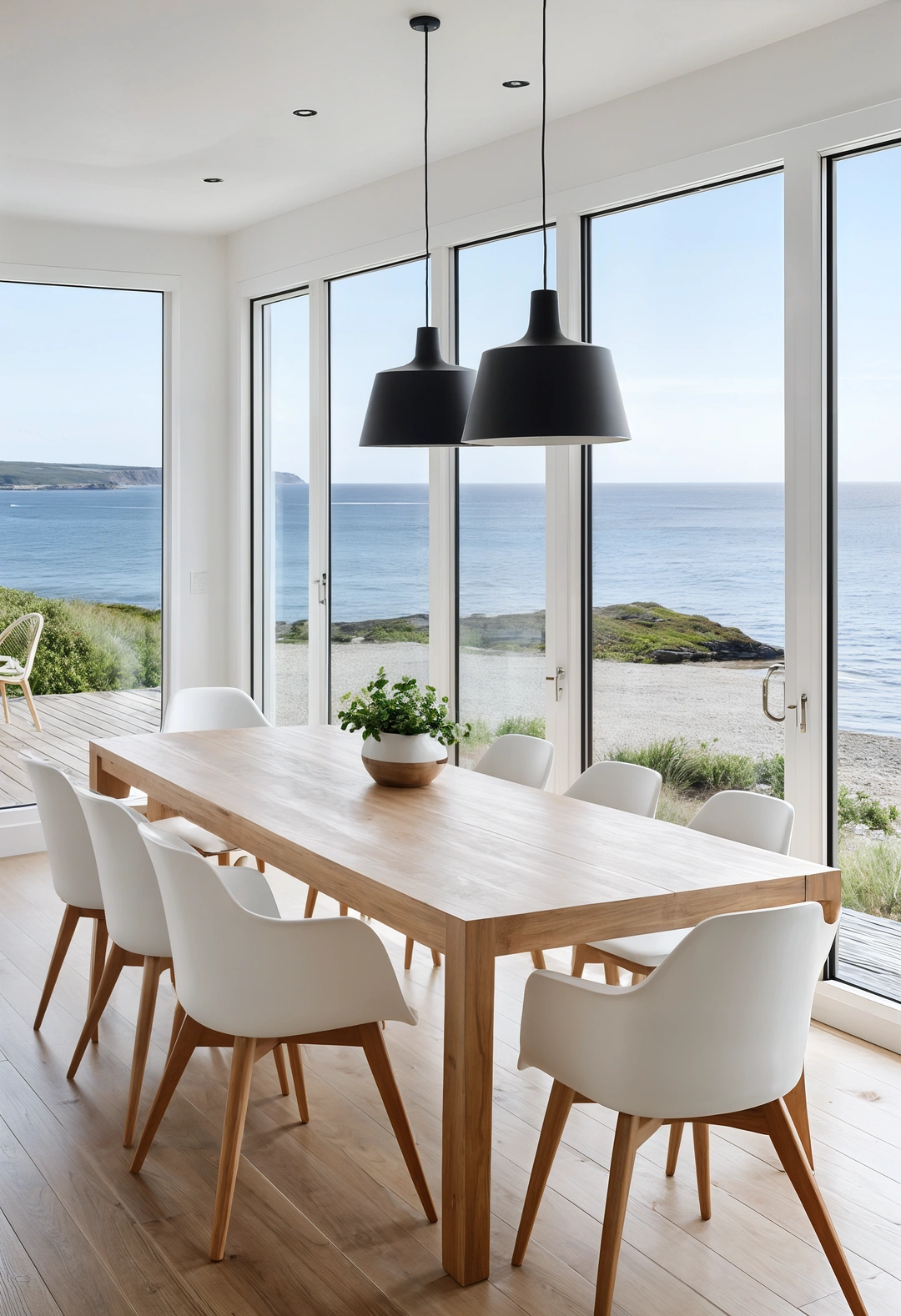
This dramatic seascape approach often appeals to properties with expansive water views wanting to maximize coastal experience. Minimal furnishings and large windows typically allow ocean views to dominate while providing necessary weather protection.
Design consideration: Ocean exposure often requires storm-resistant construction while design should accommodate seasonal weather variations and potential extreme conditions.
Practical benefit: Ocean-focused design typically provides unparalleled views while offering the dramatic natural beauty that enhances daily living and property distinction.
10. Cliff-Top Positioning
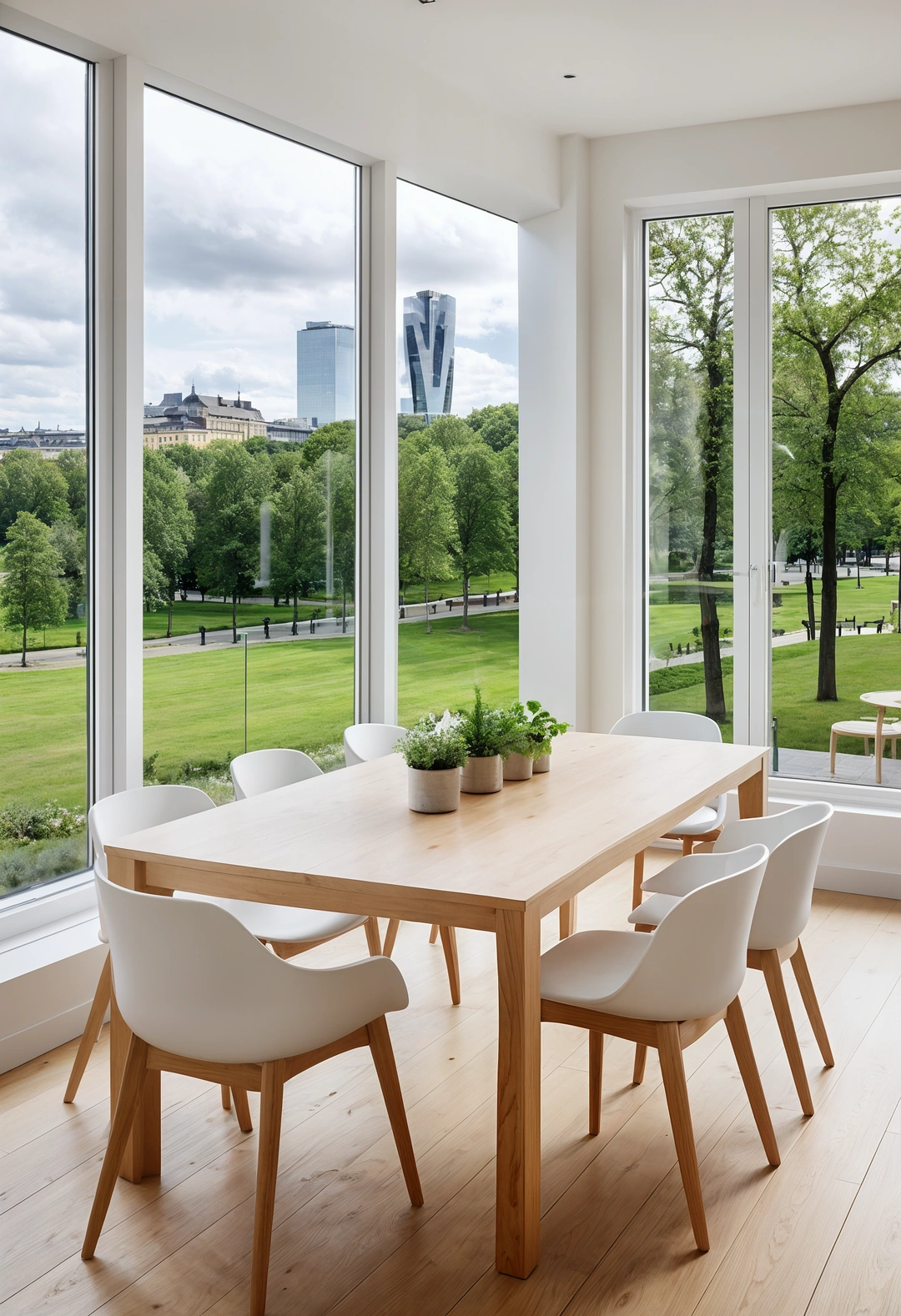
This elevated approach often appeals to dramatic sites wanting to maximize views while providing safety and comfort. Secure furniture arrangements and weather-resistant materials typically accommodate exposed positions while maintaining Nordic elegance.
Design consideration: Cliff locations often require specialized engineering while design should consider wind exposure and structural requirements for elevated positions.
Practical benefit: Elevated positioning typically provides spectacular views while requiring careful attention to safety and weather resistance that ensures year-round usability.
11. Urban Park Adjacency
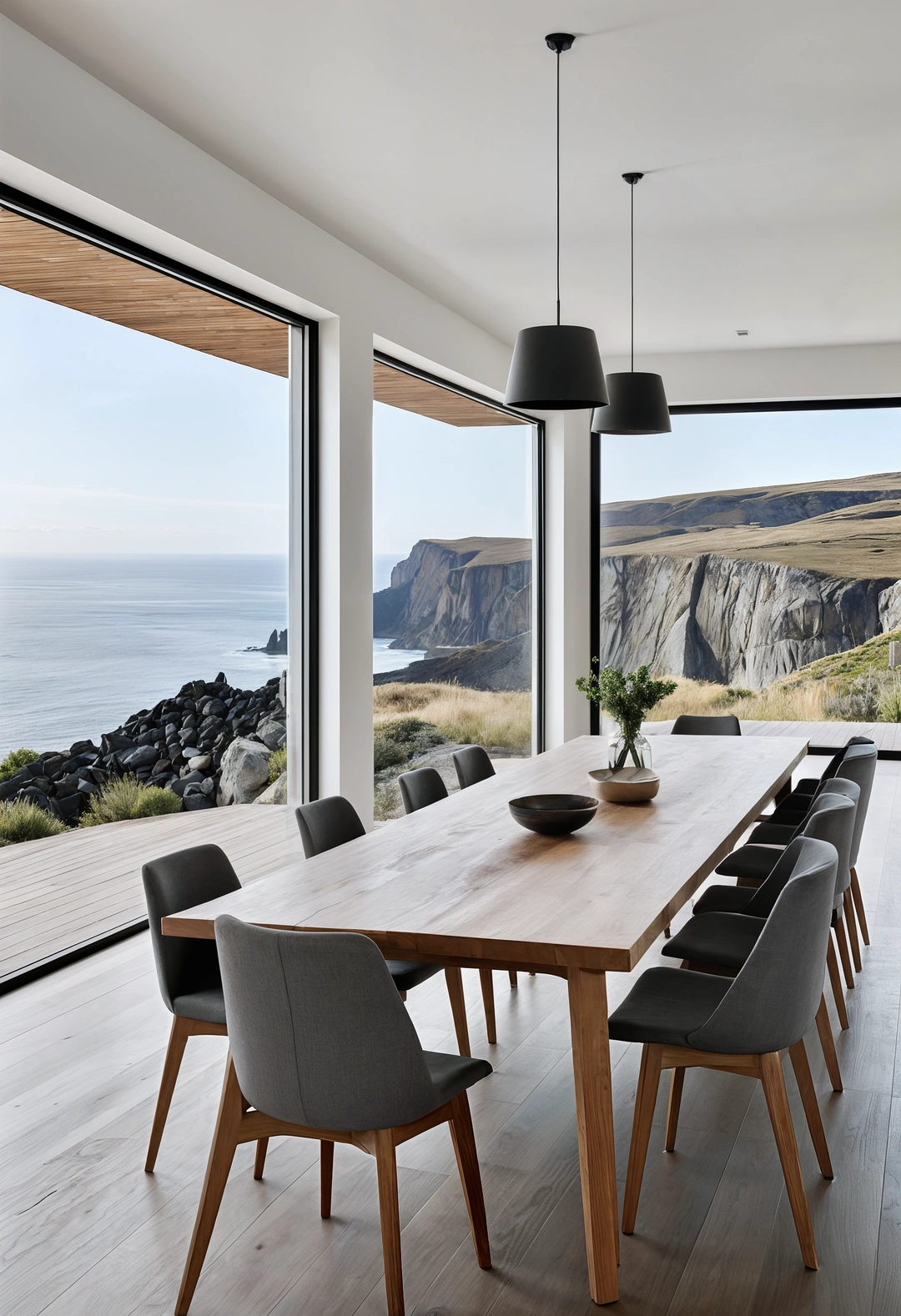
This green-urban approach often appeals to city properties wanting natural connection without leaving urban amenities. Park-facing windows and natural elements typically provide green views while maintaining sophisticated city living.
Design consideration: Park adjacency often provides superior natural light while design should consider seasonal changes in tree coverage and public activity levels.
Practical benefit: Park proximity typically offers nature connection while providing the urban convenience that supports contemporary family lifestyles and daily needs.
12. Meadow Landscape Integration
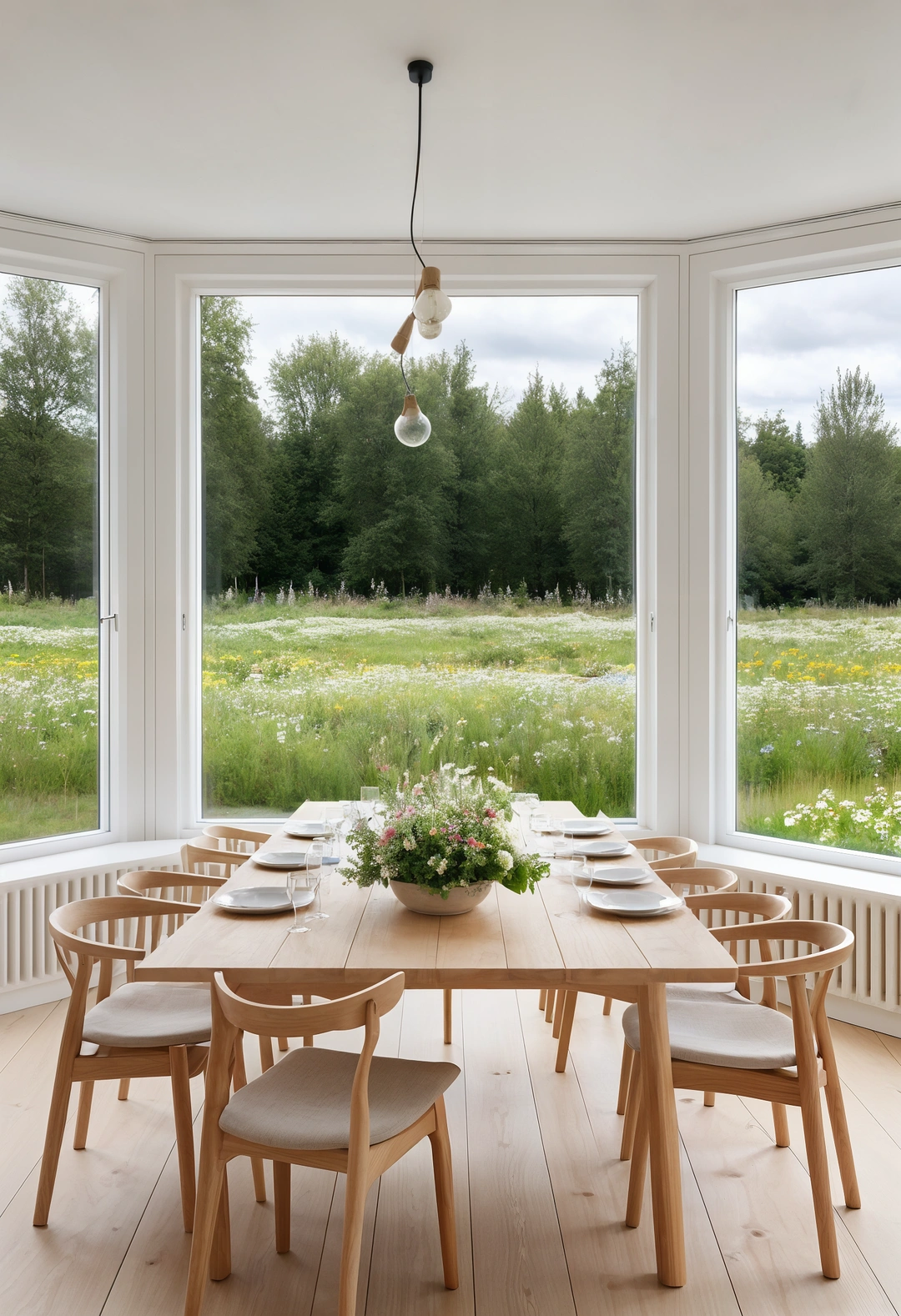
This pastoral approach often appeals to properties in open landscapes wanting seasonal beauty and natural connection. Flexible color schemes and natural materials typically accommodate changing seasonal views and agricultural cycles.
Design consideration: Meadow settings often provide excellent natural light while design should accommodate seasonal variations in landscape color and farming activities.
Practical benefit: Open landscape design typically provides peaceful environments while offering the seasonal variety that maintains visual interest throughout the year.
13. Tropical Forest Adaptation
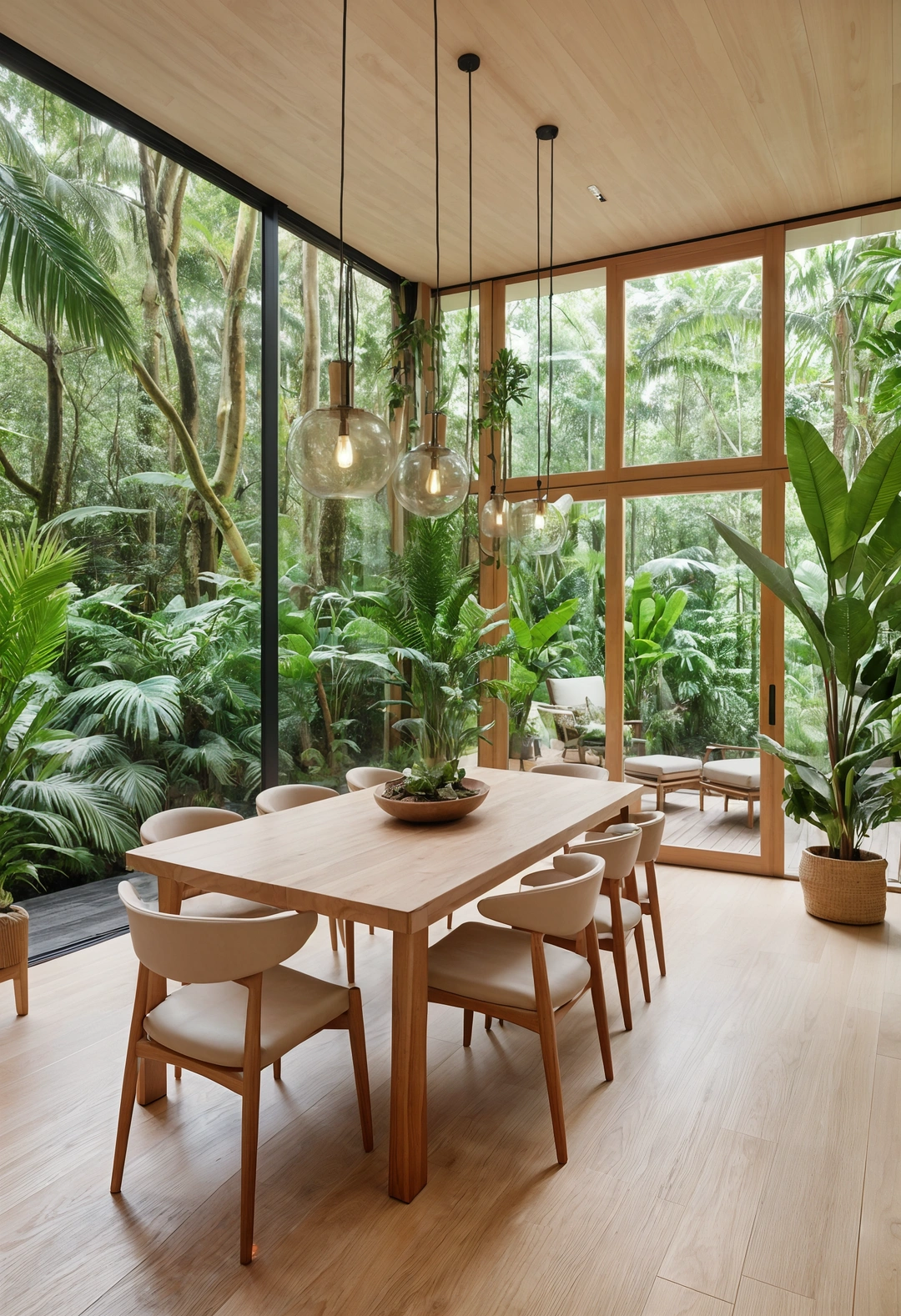
This lush approach often appeals to properties in dense vegetation wanting Nordic principles adapted to tropical conditions. Natural materials and earth tones typically complement jungle settings while providing necessary cooling and humidity control.
Design consideration: Tropical environments often require specialized ventilation while material selection should accommodate high humidity and potential insect considerations.
Practical benefit: Tropical adaptation typically provides year-round natural beauty while demonstrating how Nordic principles can enhance rather than conflict with non-traditional climates.
14. Sunset-Facing Orientation
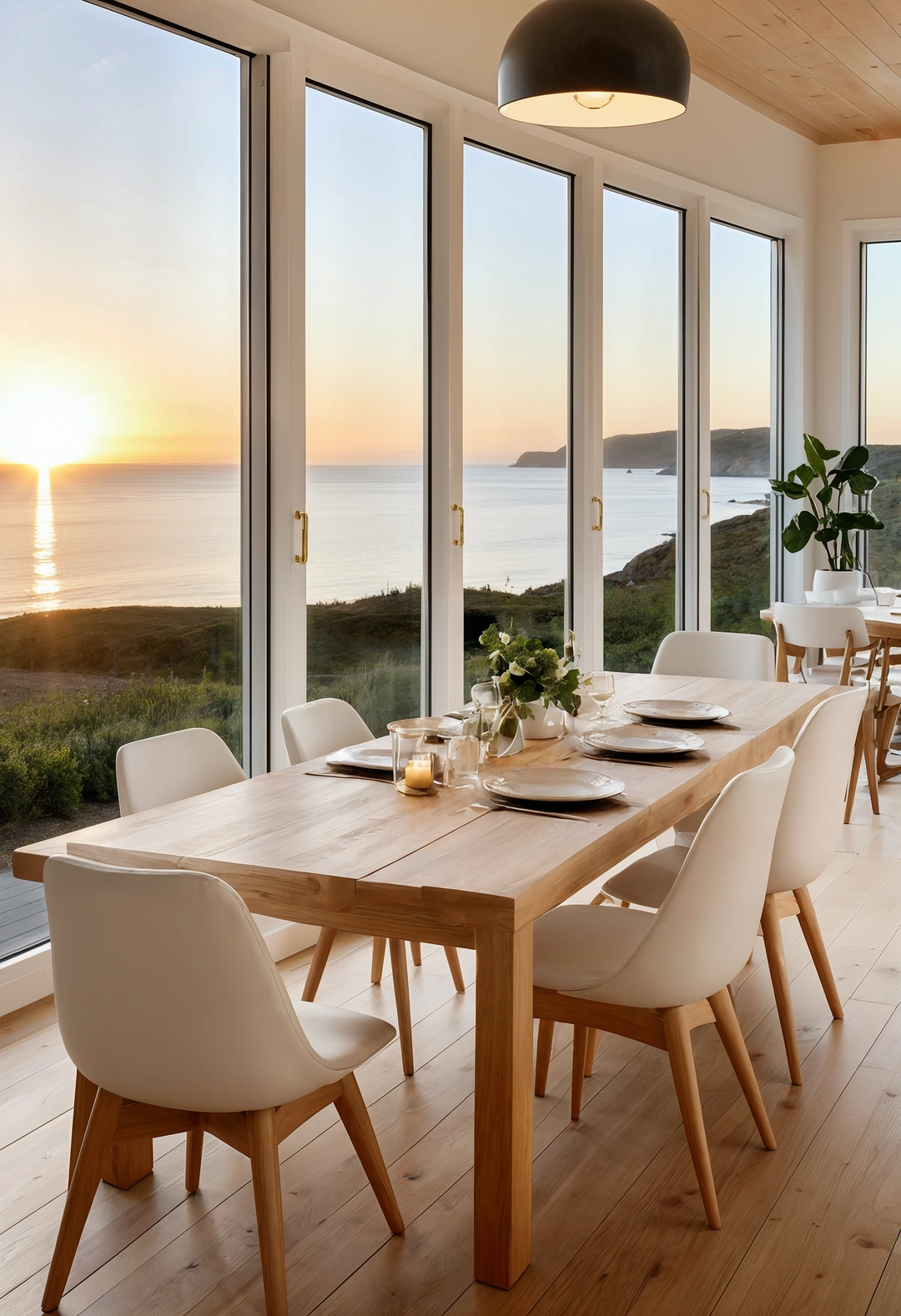
This light-focused approach often appeals to properties with western exposures wanting to optimize evening natural light. Warm materials and strategic seating typically maximize sunset views while providing appropriate glare control.
Design consideration: Sunset orientation often requires UV protection while furniture arrangement should accommodate both bright evening light and general artificial lighting needs.
Practical benefit: Sunset optimization typically provides daily natural beauty while offering the enhanced evening atmosphere that improves family dining and entertaining experiences.
15. Rocky Shoreline Character
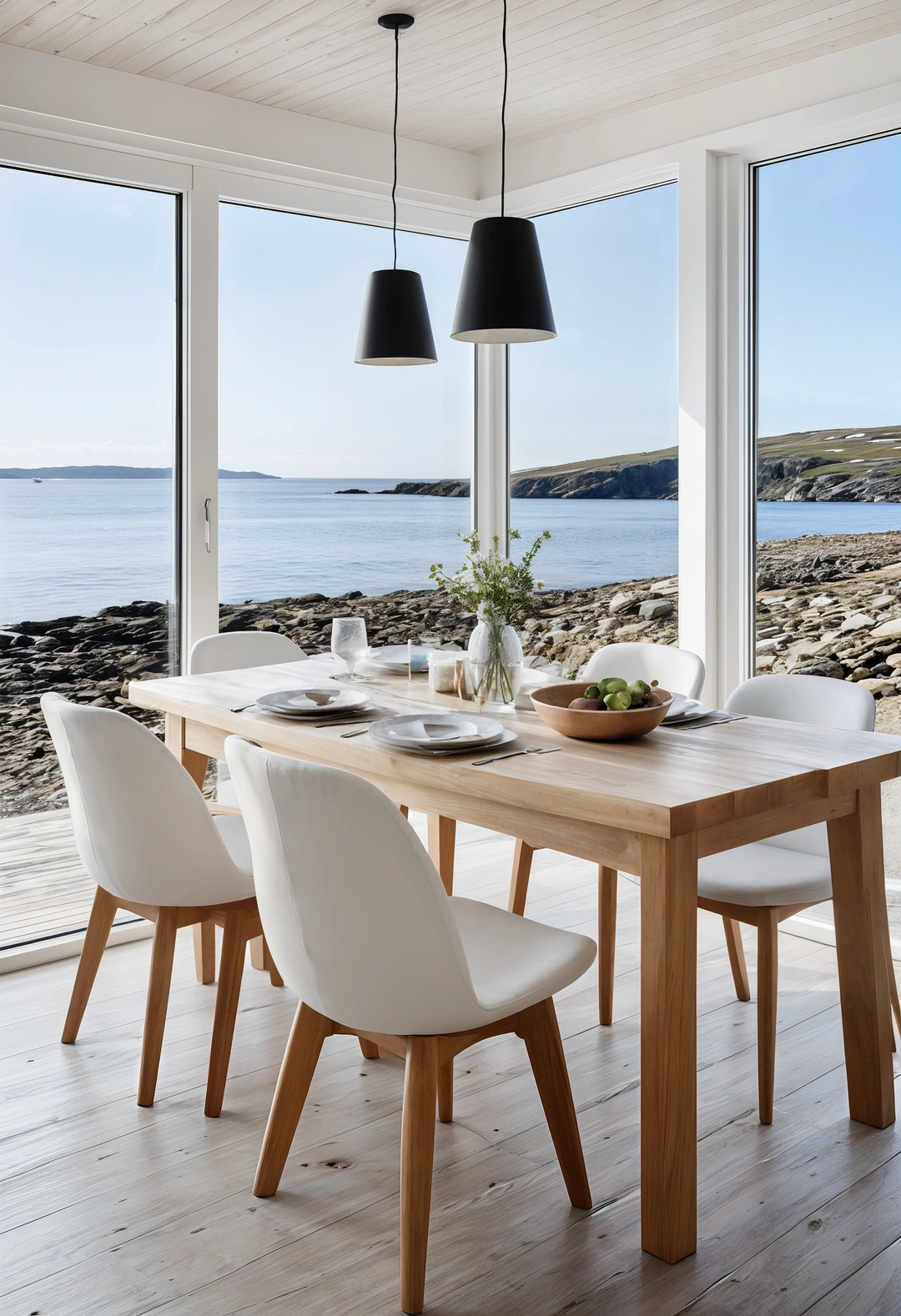
This rugged coastal approach often appeals to properties on dramatic shorelines wanting sophisticated response to challenging natural conditions. Durable materials and secure arrangements typically provide safety while maintaining Nordic aesthetic discipline.
Design consideration: Rocky coastlines often require weather-resistant construction while design should accommodate spray, wind, and potential storm conditions safely.
Practical benefit: Shoreline adaptation typically provides dramatic natural beauty while requiring robust construction that ensures safety and longevity in challenging conditions.
16. Suburban Garden Integration
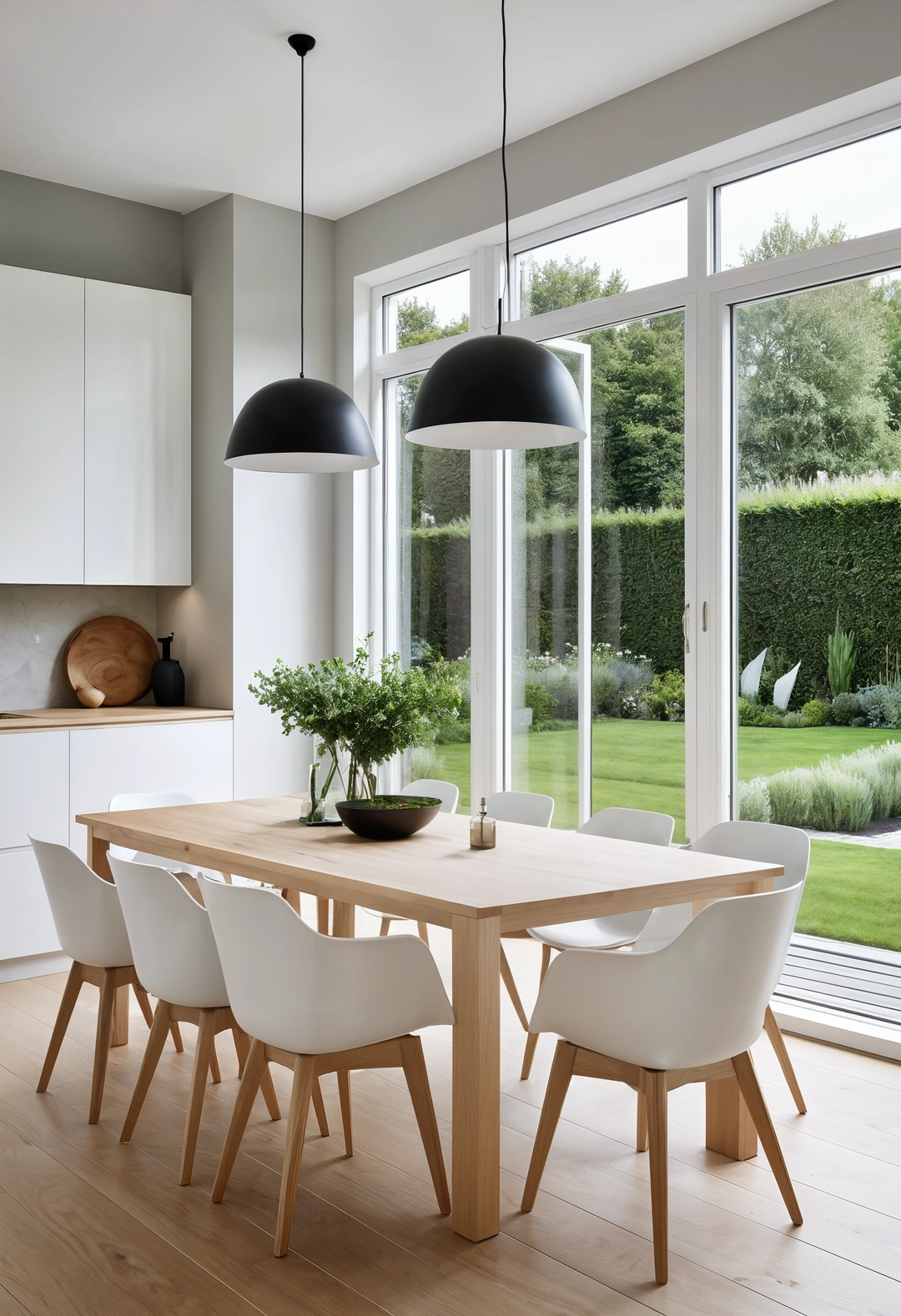
This residential approach often appeals to suburban properties wanting Nordic sophistication within established neighborhoods. Contemporary elements and garden connections typically provide style while maintaining neighborhood compatibility.
Design consideration: Suburban settings often require privacy consideration while design should enhance rather than overwhelm existing landscape and architectural context.
Practical benefit: Suburban Nordic design typically provides sophisticated family environments while offering the convenience and community connection that supports contemporary lifestyles.
17. Designed Landscape Response
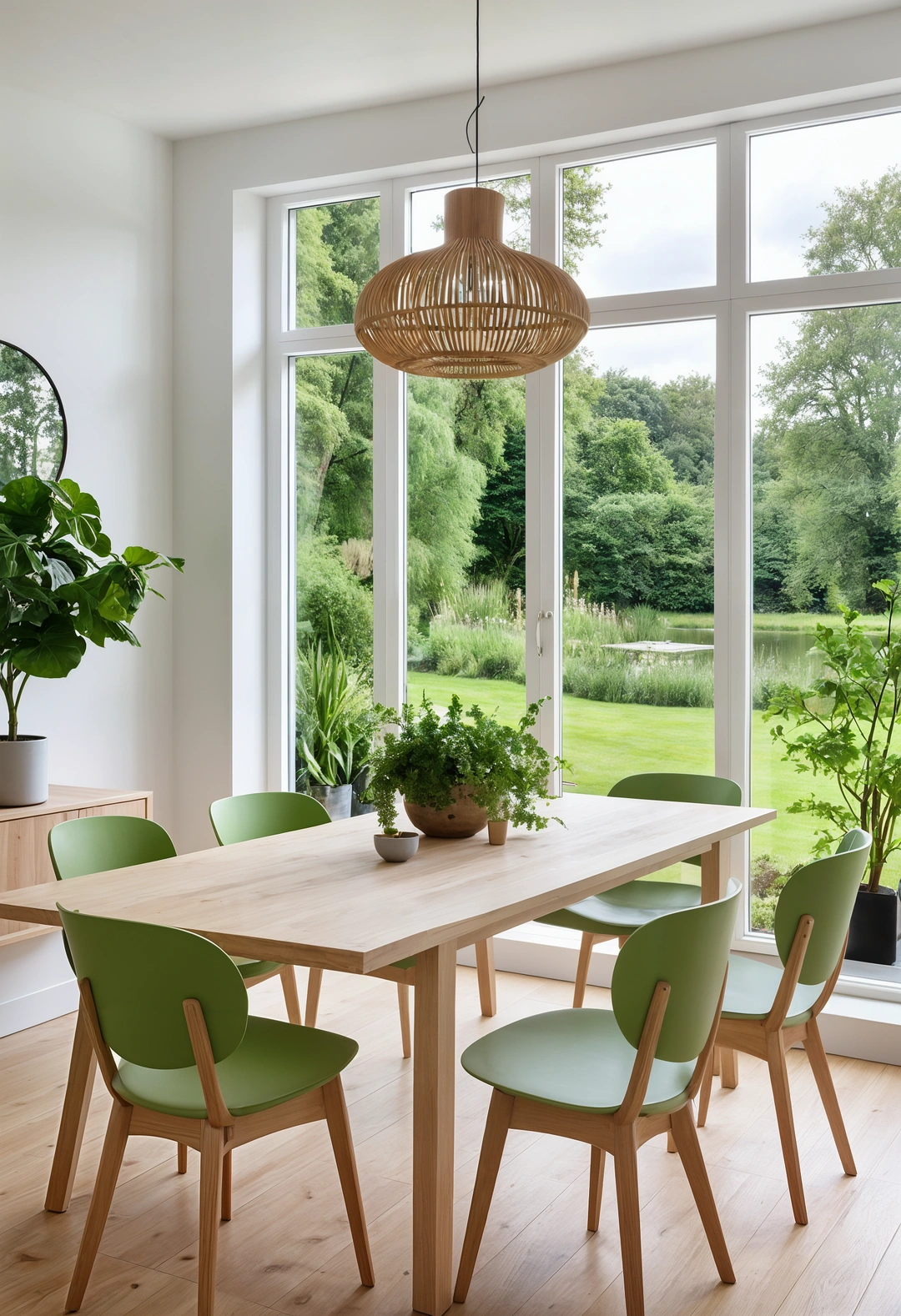
This cultivated approach often appeals to properties with formal gardens wanting sophisticated interior-exterior relationships. Coordinated color schemes and natural materials typically complement designed landscapes while maintaining interior comfort.
Design consideration: Formal gardens often provide controlled views while interior design should enhance rather than compete with landscape architecture and seasonal garden displays.
Practical benefit: Garden coordination typically provides year-round beauty while offering the controlled natural environment that enhances rather than challenges interior comfort.
18. Industrial Context Adaptation
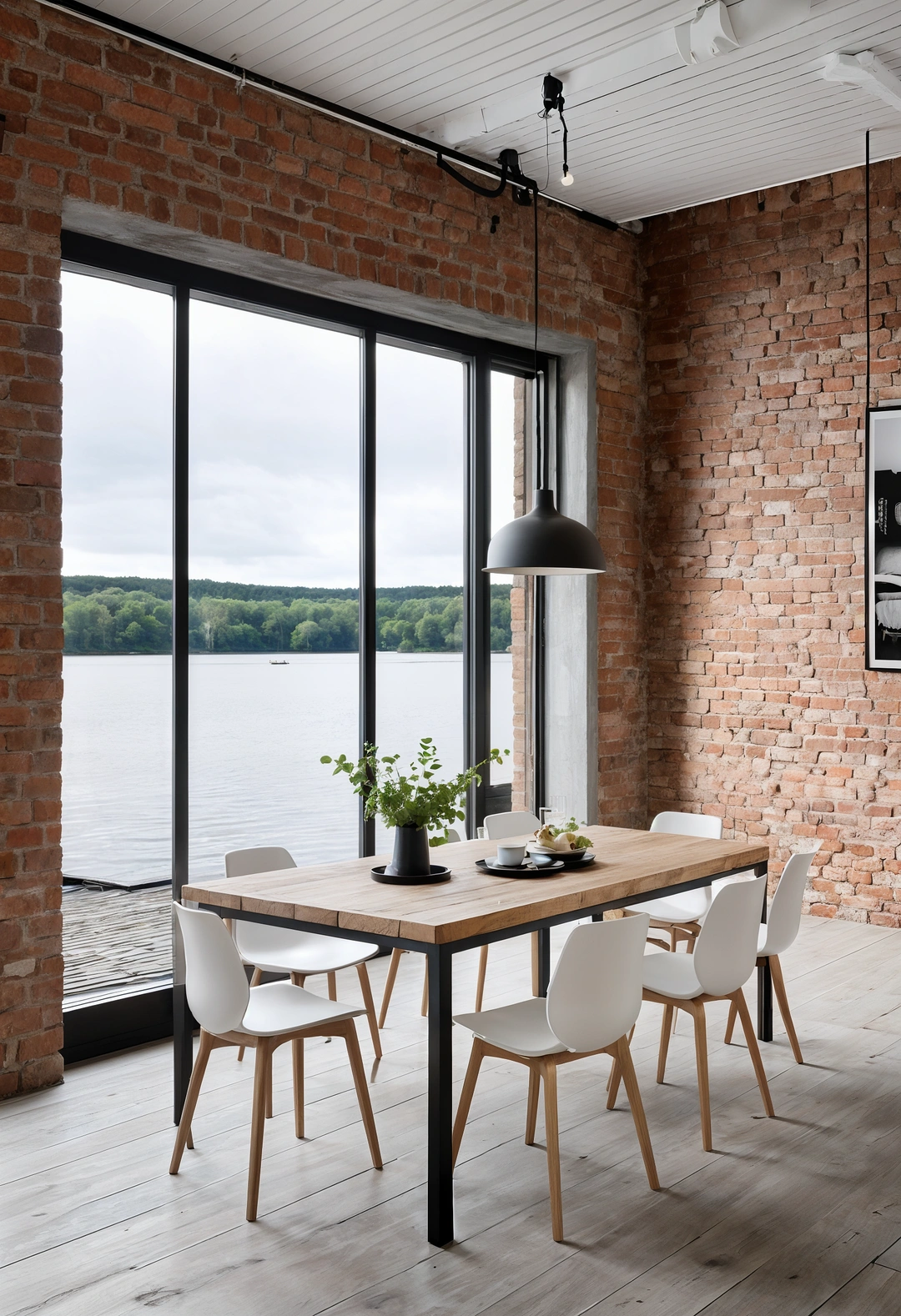
This urban-industrial approach often appeals to converted spaces wanting Nordic warmth within industrial architecture. Natural materials and soft furnishings typically balance hard architectural elements while maintaining authentic character.
Design consideration: Industrial conversions often provide unique architectural character while requiring careful integration of modern comfort systems with existing structural elements.
Practical benefit: Industrial adaptation typically offers distinctive living environments while providing the urban convenience and unique character that enhance property value.
19. Seasonal Foliage Optimization
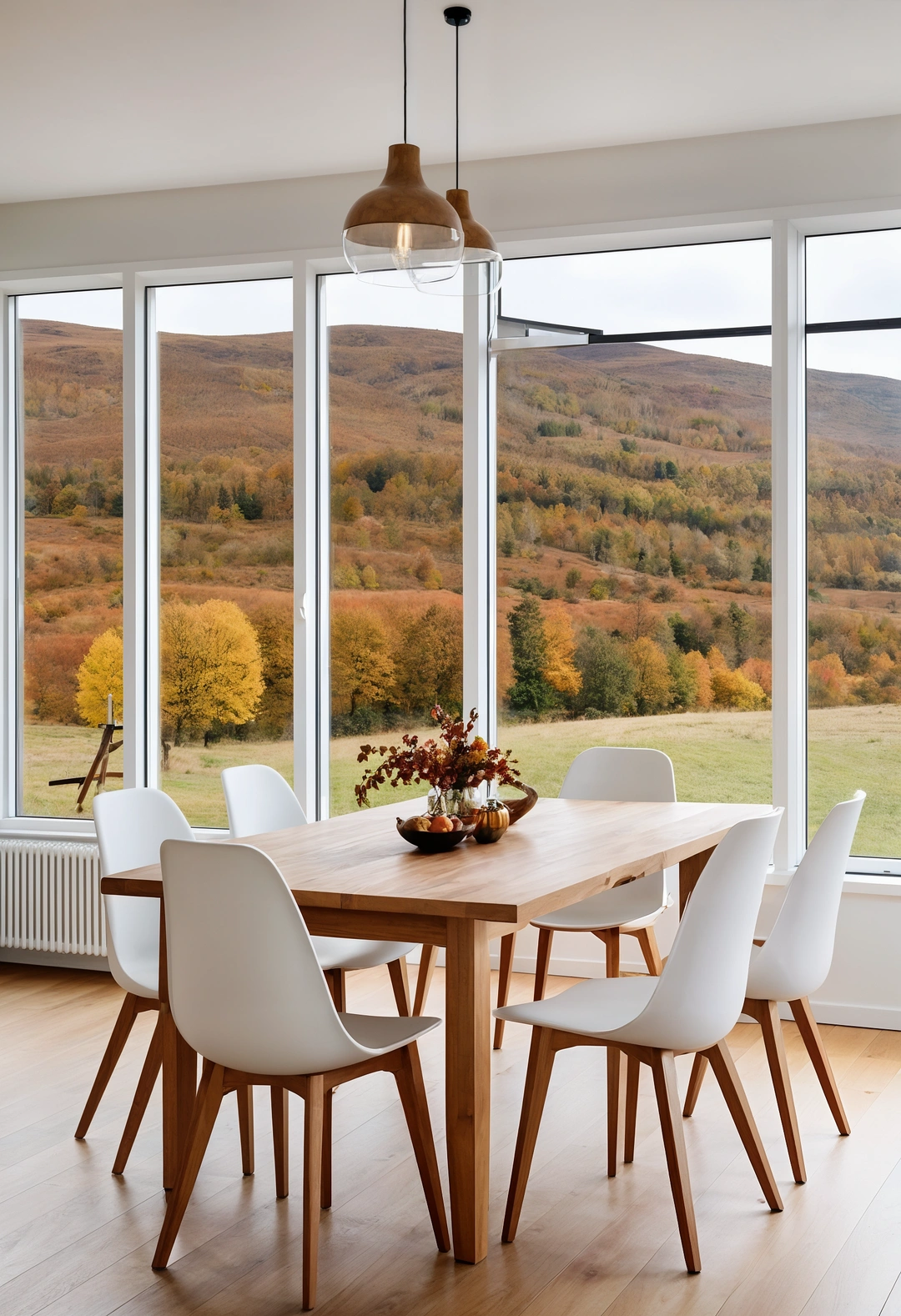
This deciduous approach often appeals to properties in regions with dramatic seasonal changes wanting to optimize varying natural beauty. Flexible arrangements and seasonal elements typically accommodate changing views while maintaining year-round comfort.
Design consideration: Seasonal landscapes often provide dramatic variety while design should remain attractive during all seasons, including periods with limited natural decoration.
Practical benefit: Seasonal optimization typically provides year-round natural interest while offering the variety that prevents visual monotony and enhances long-term family satisfaction.
20. Agricultural Setting Integration
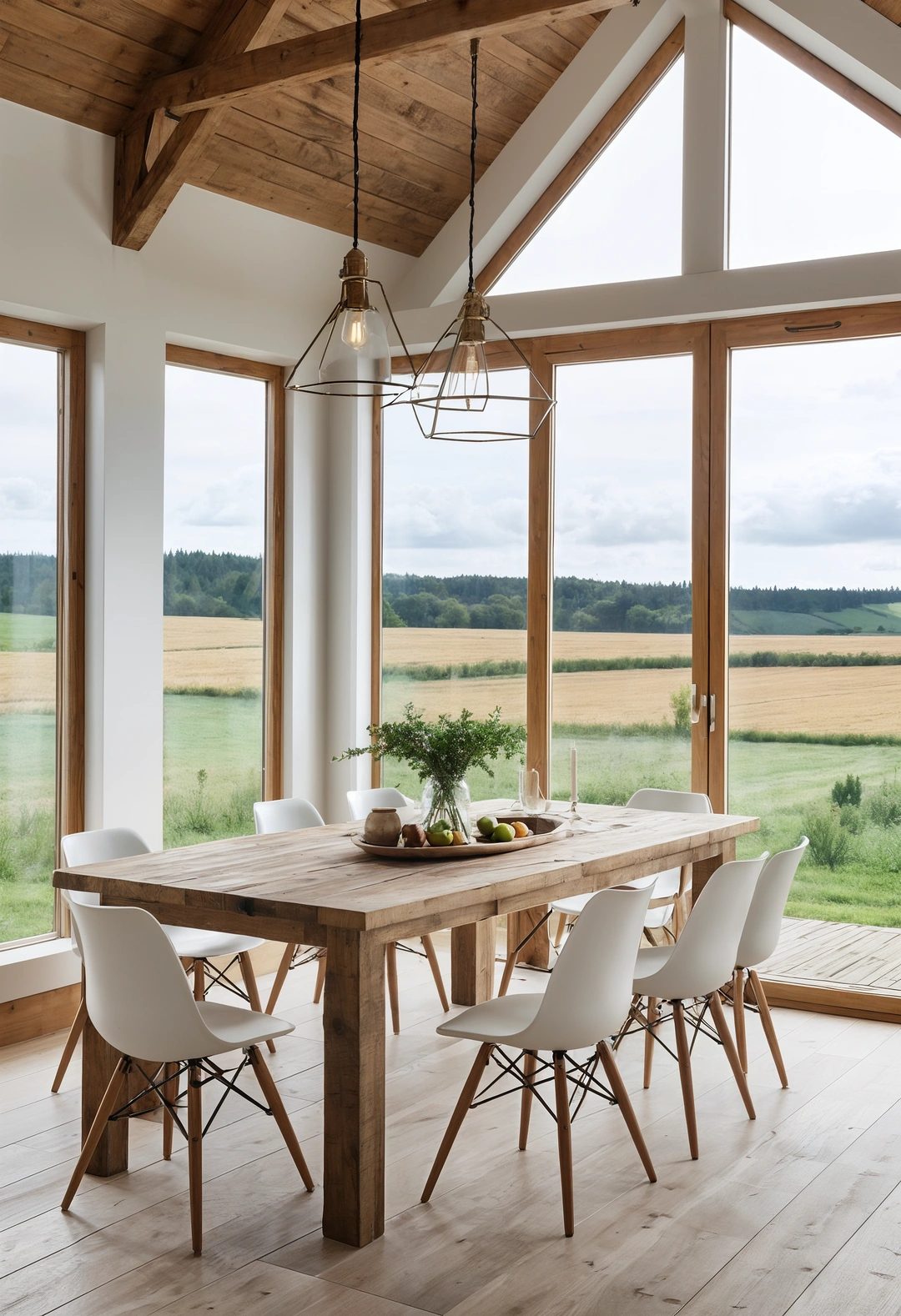
This farm-country approach often appeals to properties in working agricultural areas wanting Nordic sophistication that respects rural character. Natural materials and earth tones typically complement farming landscapes while providing contemporary comfort.
Design consideration: Agricultural settings often provide expansive views while design should accommodate seasonal farming activities and potential agricultural odors or noise.
Practical benefit: Farm integration typically provides peaceful environments while offering connection to food production and seasonal cycles that enhance family understanding of natural processes.
21. Rooftop Urban Adaptation
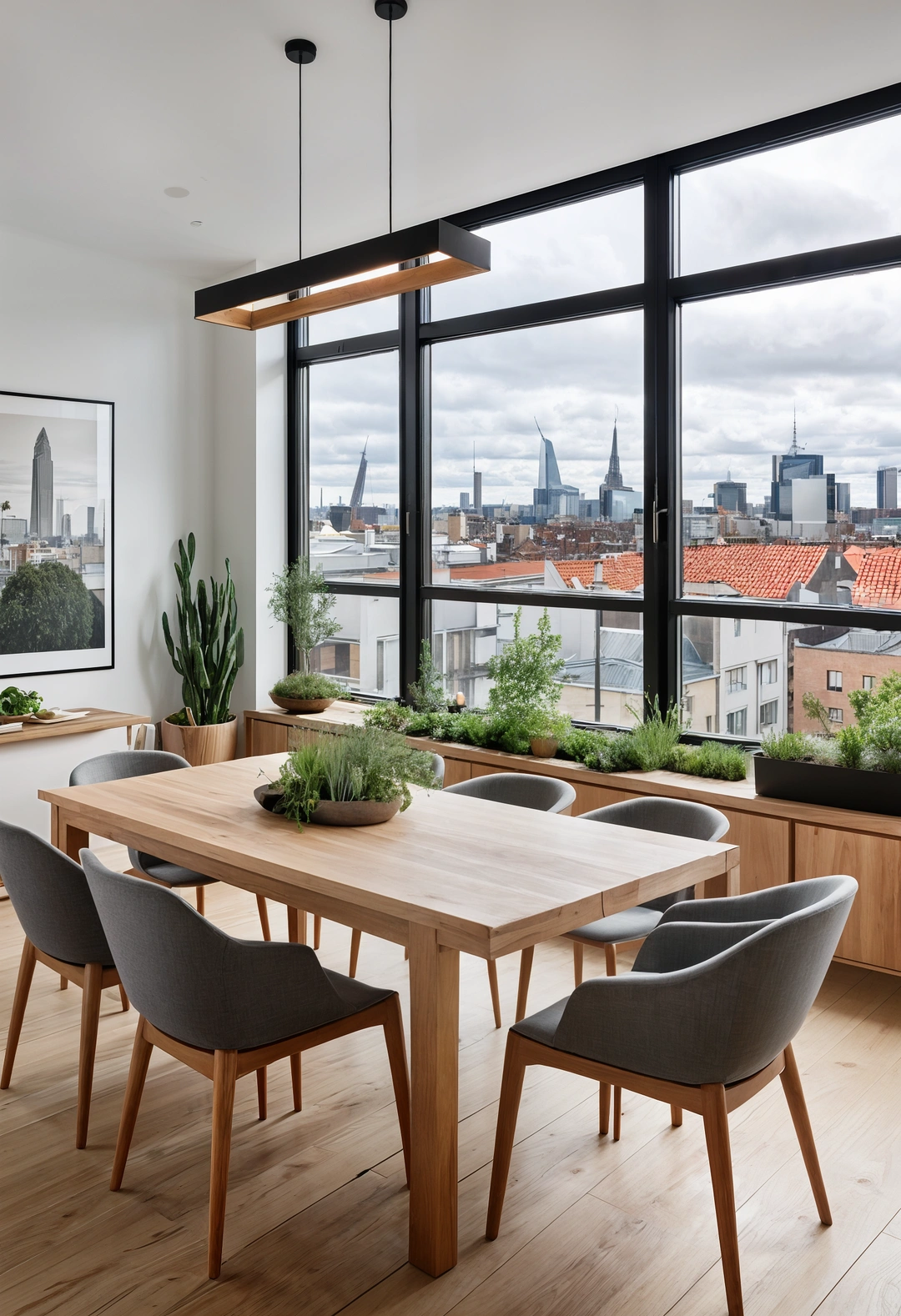
This elevated urban approach often appeals to city dwellers wanting Nordic principles in unique urban situations. Weather-resistant materials and secure arrangements typically accommodate rooftop conditions while maximizing city views.
Design consideration: Rooftop locations often require specialized construction while design should accommodate wind, weather exposure, and potential structural limitations.
Practical benefit: Rooftop adaptation typically provides unique urban views while offering private outdoor space that enhances city living and property distinction.
22. River Valley Integration
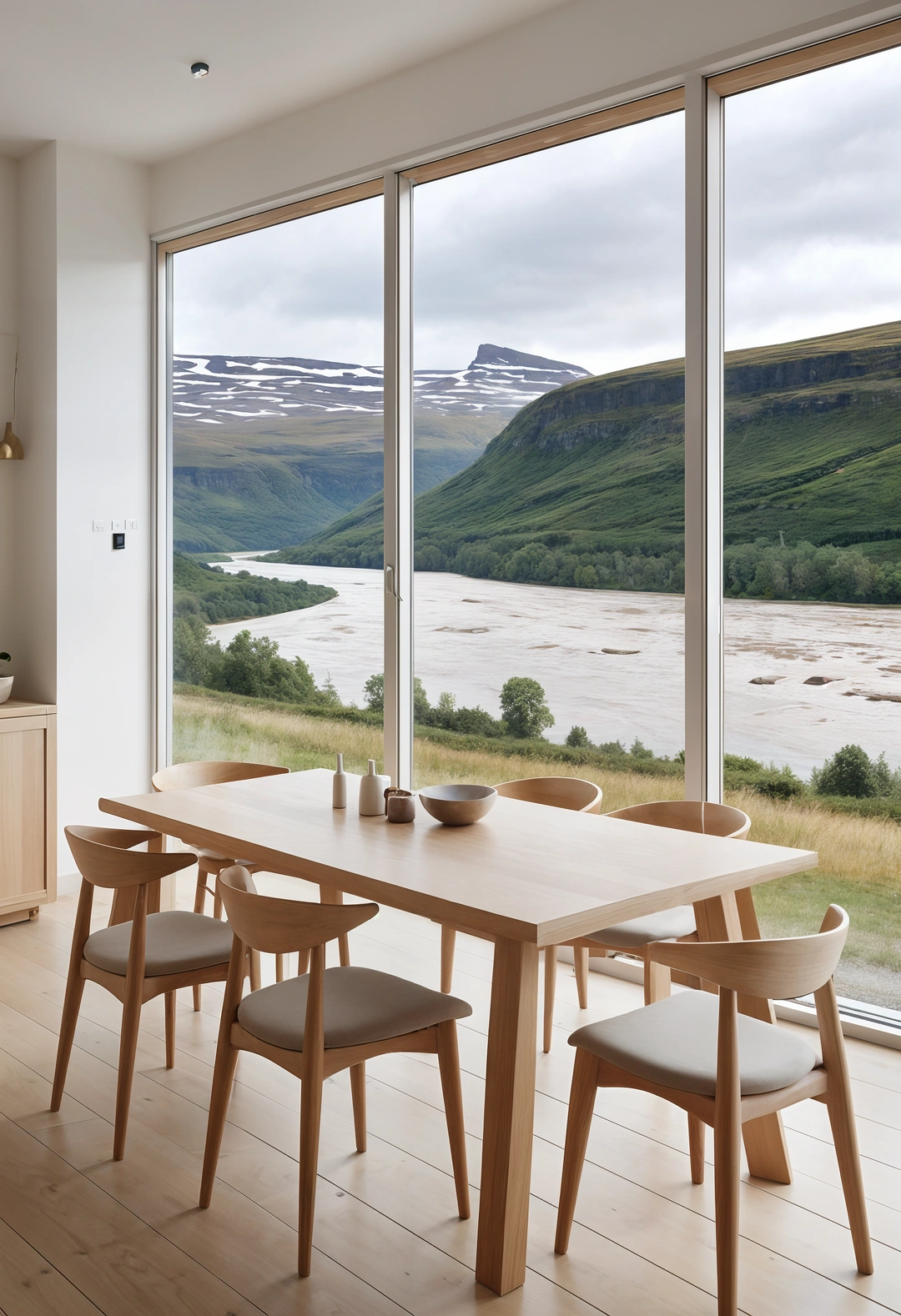
This flowing-water approach often appeals to properties near rivers wanting peaceful natural connection with dynamic water features. Natural materials and earth tones typically complement river environments while providing necessary flood consideration.
Design consideration: River proximity often provides excellent natural beauty while design should consider seasonal flooding and humidity effects on materials and comfort.
Practical benefit: River integration typically provides natural beauty and sound while requiring appropriate consideration of seasonal water level changes and potential weather challenges.
23. Small Coastal Community
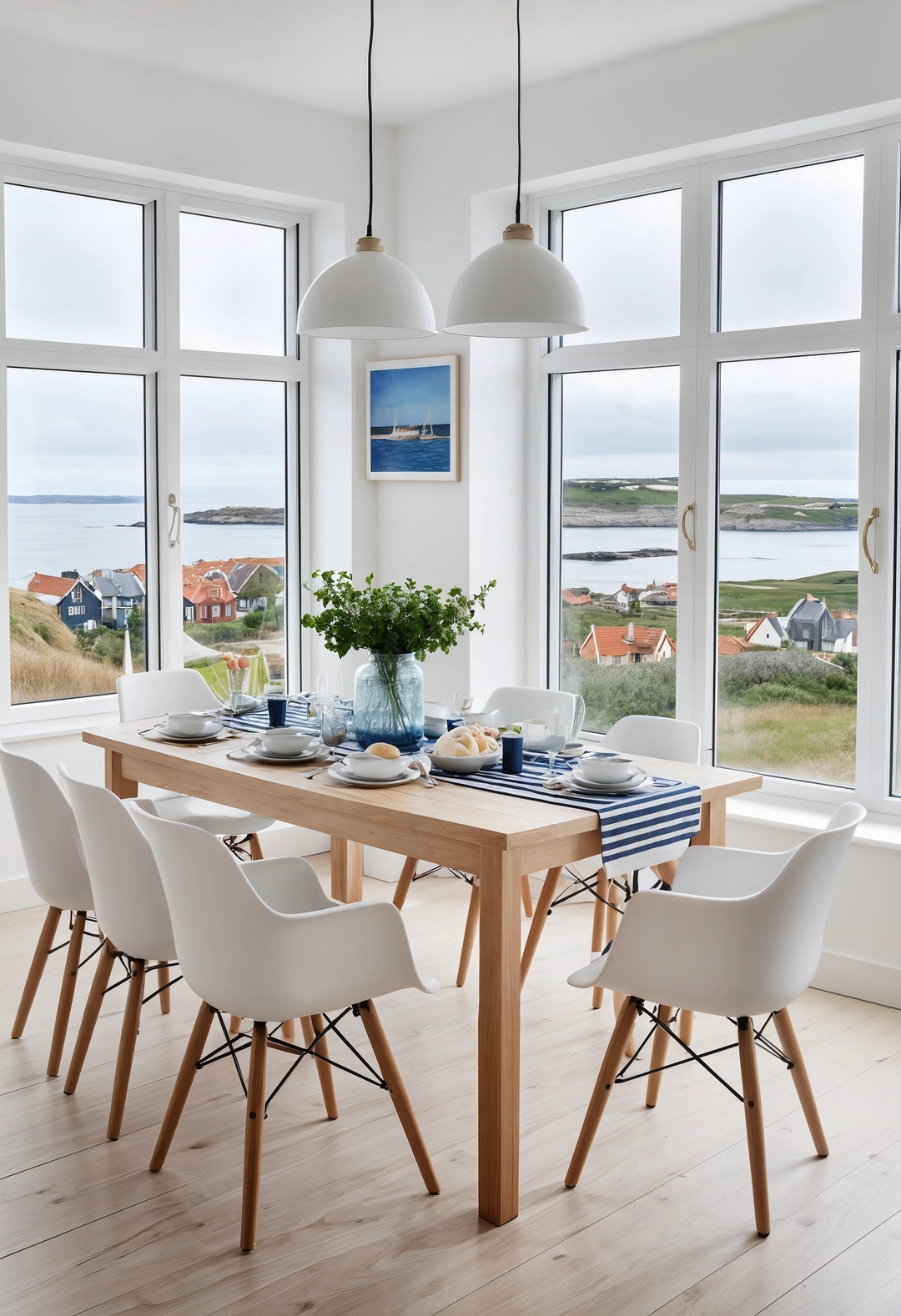
This village-scale approach often appeals to properties in small coastal towns wanting Nordic sophistication that respects community character. Local materials and appropriate scale typically maintain community compatibility while providing contemporary comfort.
Design consideration: Small communities often have established character while design should enhance rather than compete with local architectural traditions and community scale.
Practical benefit: Community integration typically provides social connection while offering the unique character that comes from respecting and enhancing established local environments.
24. Winter Lake Environment
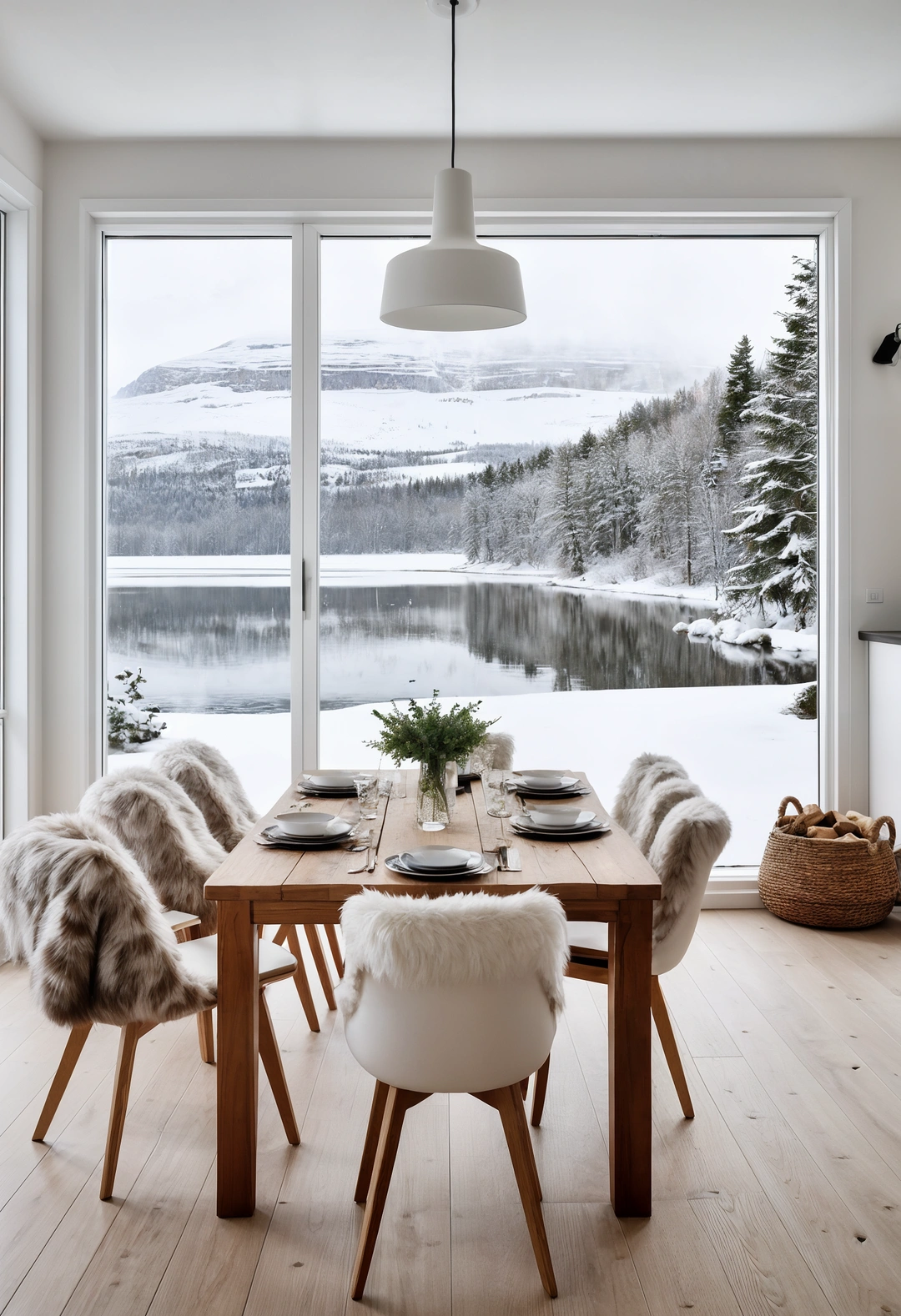
This cold-season approach often appeals to properties used primarily during winter months wanting specialized seasonal comfort. Warm materials and enhanced lighting typically provide necessary winter comfort while maintaining Nordic design principles.
Design consideration: Winter use often requires specialized heating while design should provide uplifting environment during periods of limited daylight and challenging weather.
Practical benefit: Winter optimization typically provides seasonal comfort while offering the specialized design that makes cold-weather living more enjoyable and psychologically supportive.
25. Elevated Forest Integration
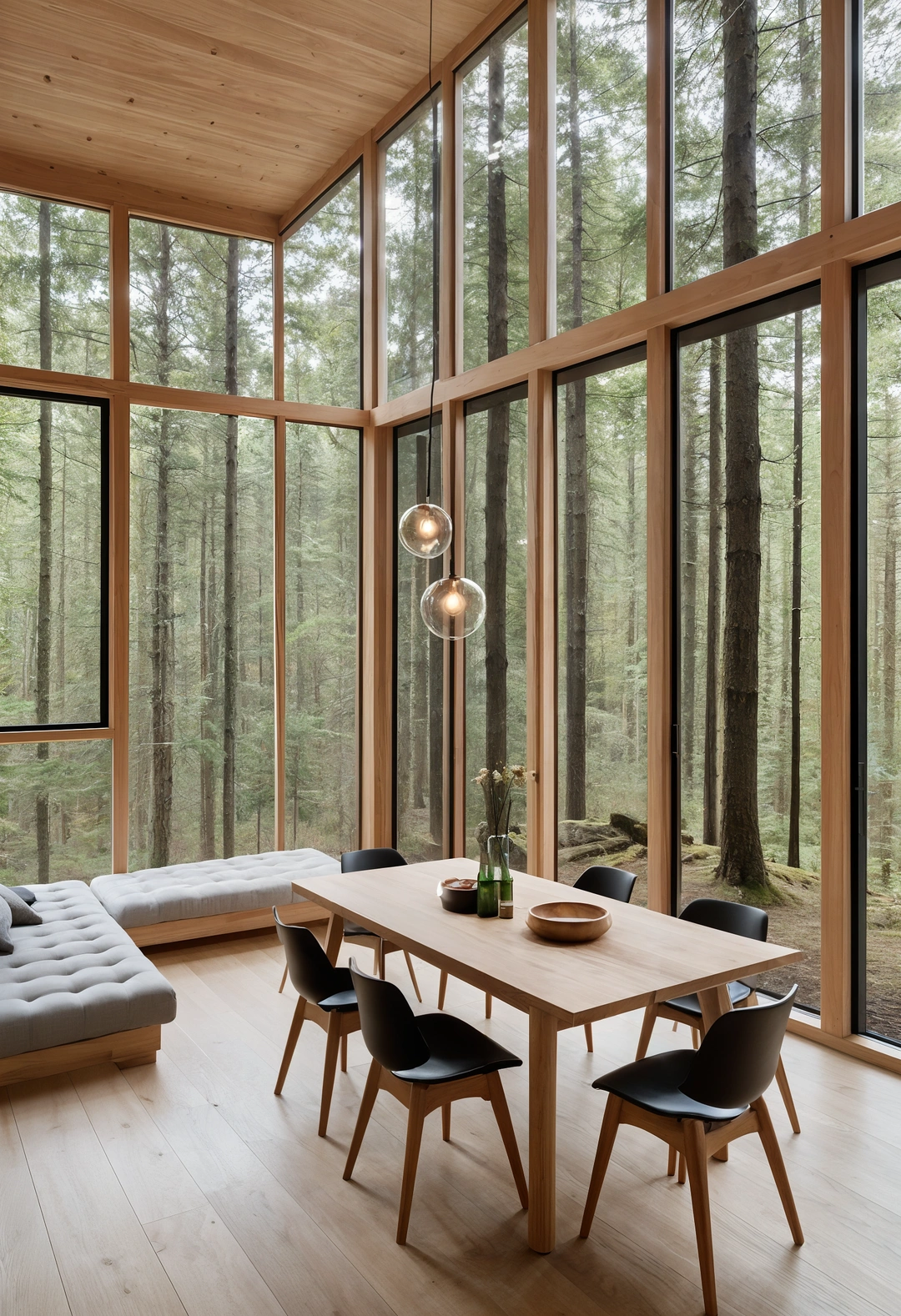
This canopy-level approach often appeals to unique properties wanting immersive natural experience while maintaining sophisticated comfort. Specialized construction and natural materials typically provide safety while offering unprecedented forest connection.
Design consideration: Elevated construction often requires specialized engineering while design should provide safety and comfort at height while maximizing unique forest views.
Practical benefit: Canopy-level design typically provides unique natural experience while requiring careful attention to structural safety and weather resistance for elevated exposure.
Understanding Scandinavian Design Adaptation
Through various Nordic-inspired projects in different environments, I’ve observed that successful Scandinavian dining design often adapts core principles to specific site conditions while maintaining the essential characteristics that define this approach. These spaces typically succeed because they honor both Nordic design philosophy and local environmental conditions while providing practical solutions for contemporary family living.
The Scandinavian approach often works well across diverse settings because it typically emphasizes quality materials, functional design, and natural light optimization that remain relevant regardless of specific location. Effective implementation usually involves understanding local climate conditions, available materials, and site-specific opportunities while maintaining the design discipline that defines Nordic aesthetics.
Planning considerations often include assessing site-specific challenges like weather exposure, view optimization, and local building requirements while ensuring that Nordic design principles enhance rather than conflict with environmental conditions. Many successful projects prioritize authentic material selection and appropriate climate response while maintaining the simplified aesthetic that makes Scandinavian design timelessly appealing.
Remember: For any window installations, structural modifications, or site-specific construction related to optimizing views and climate response, always consult with licensed professionals to ensure proper installation, weather resistance, and code compliance.

